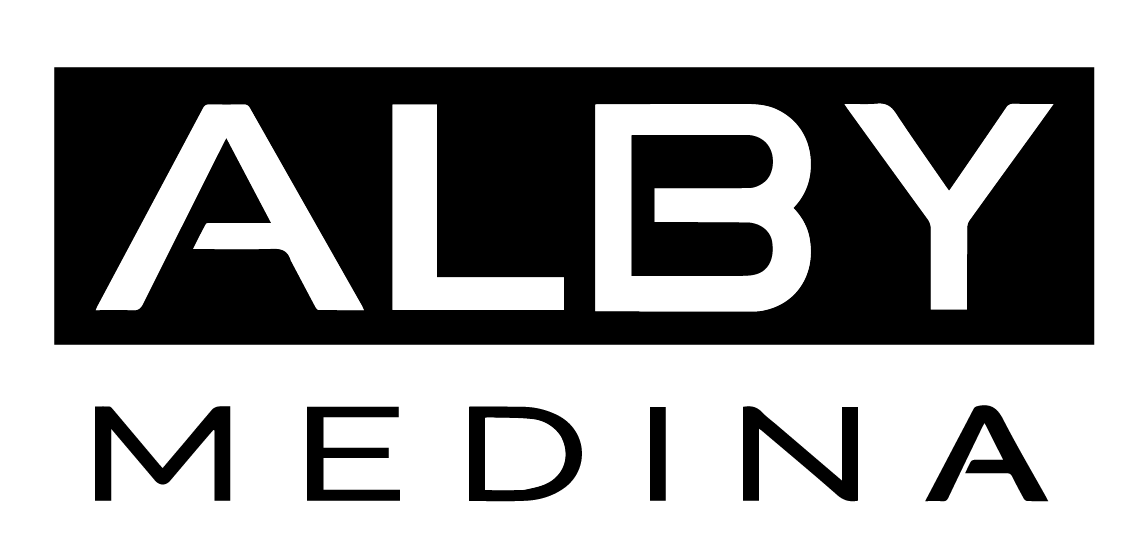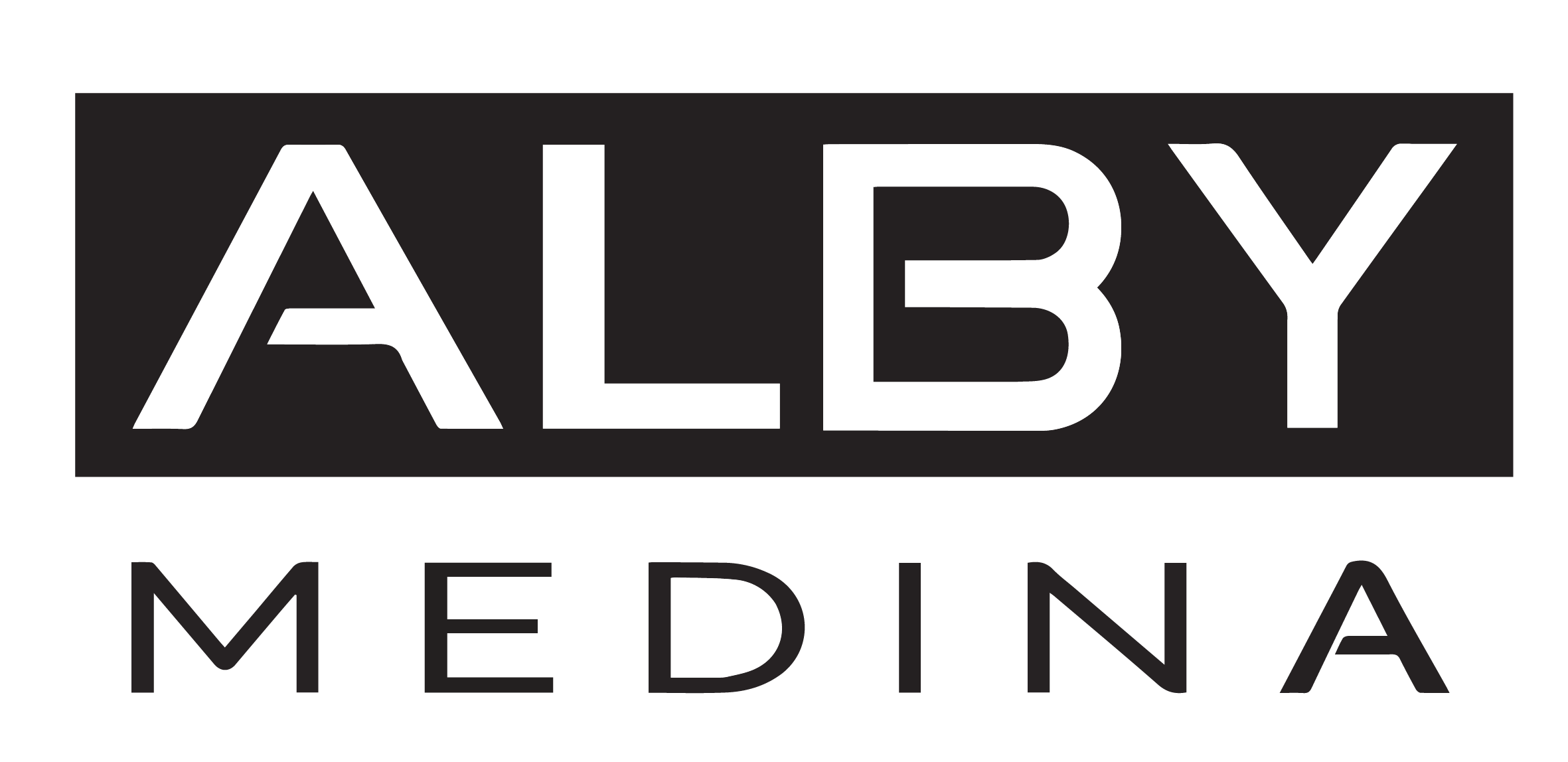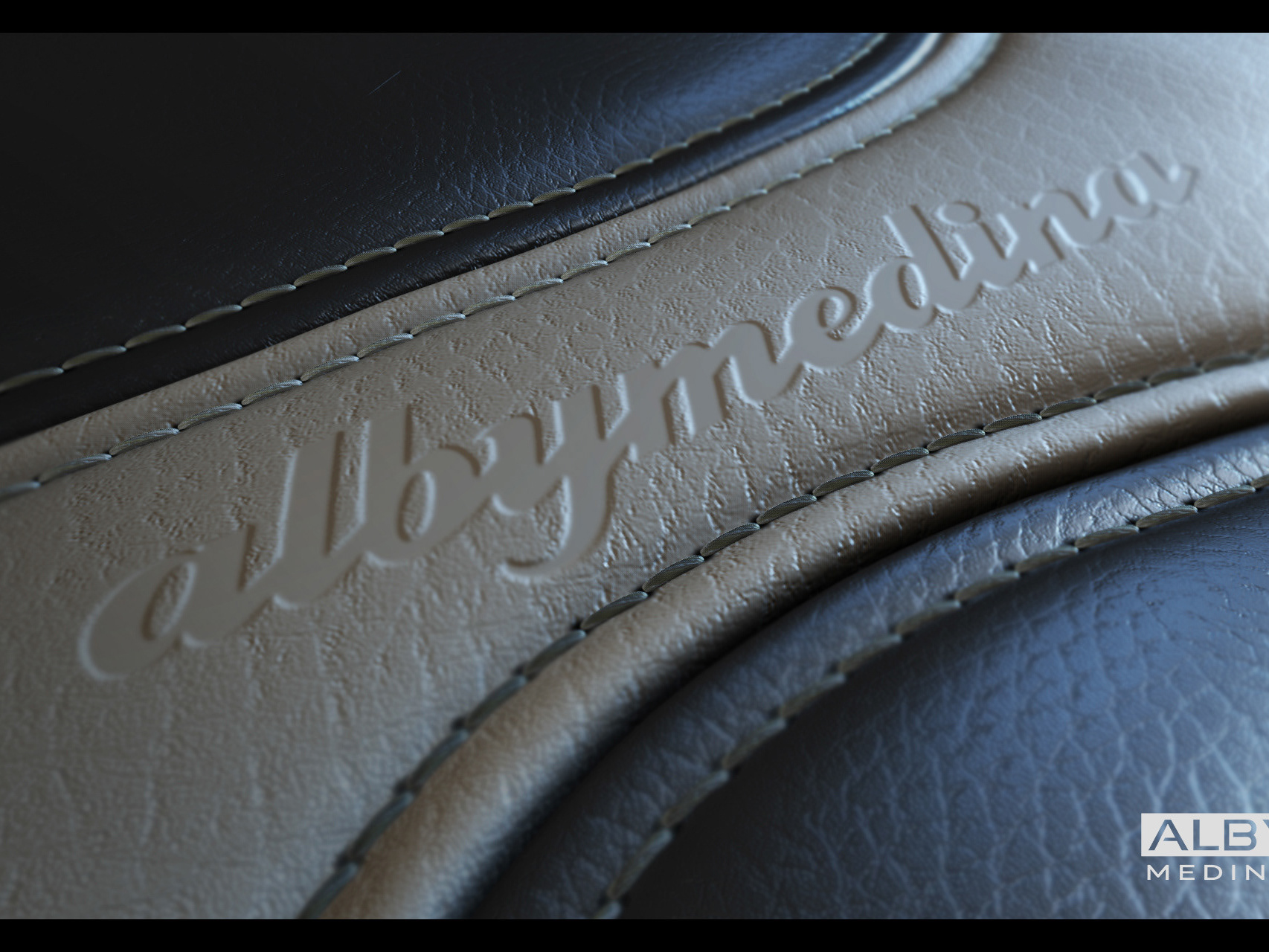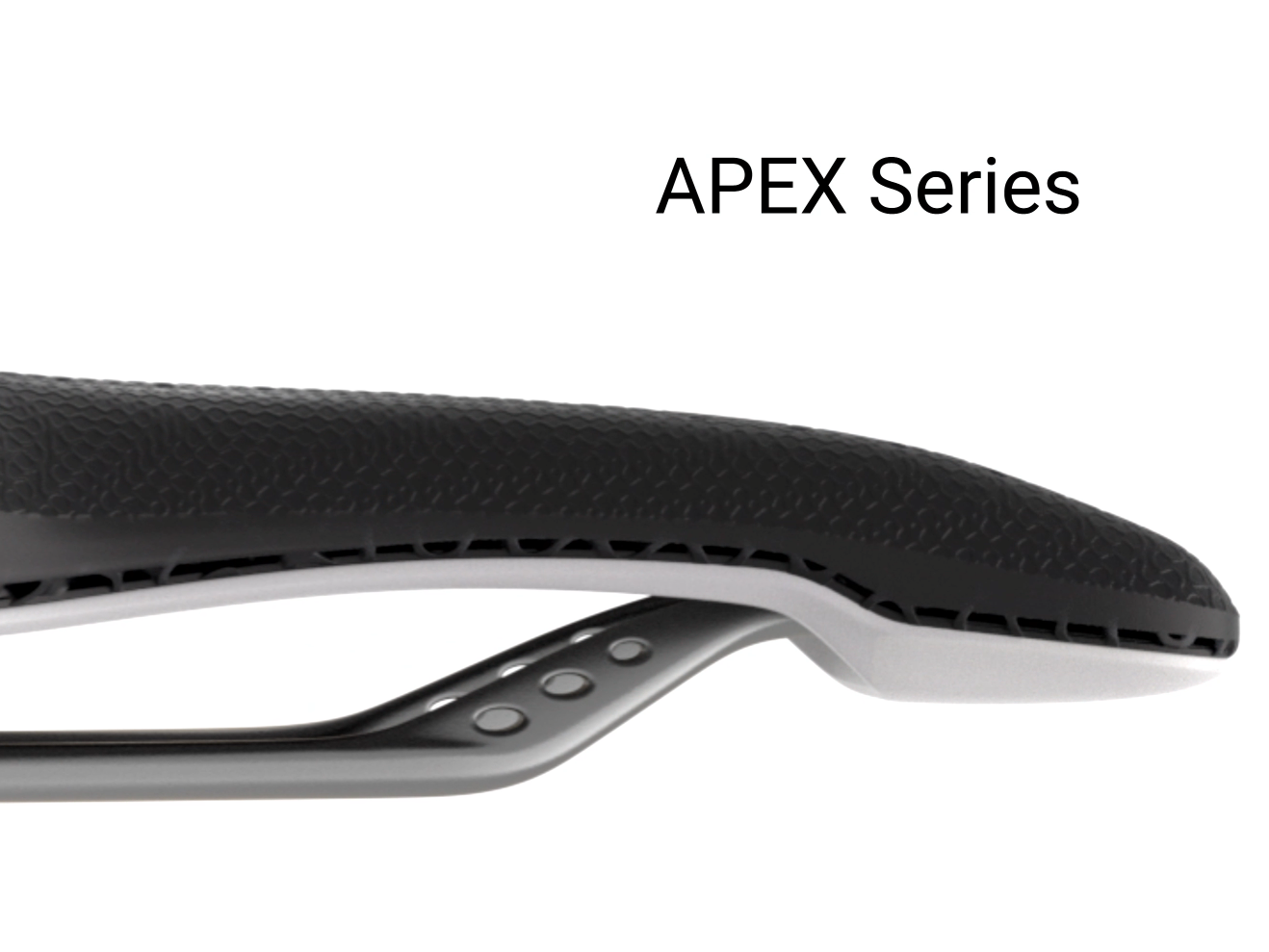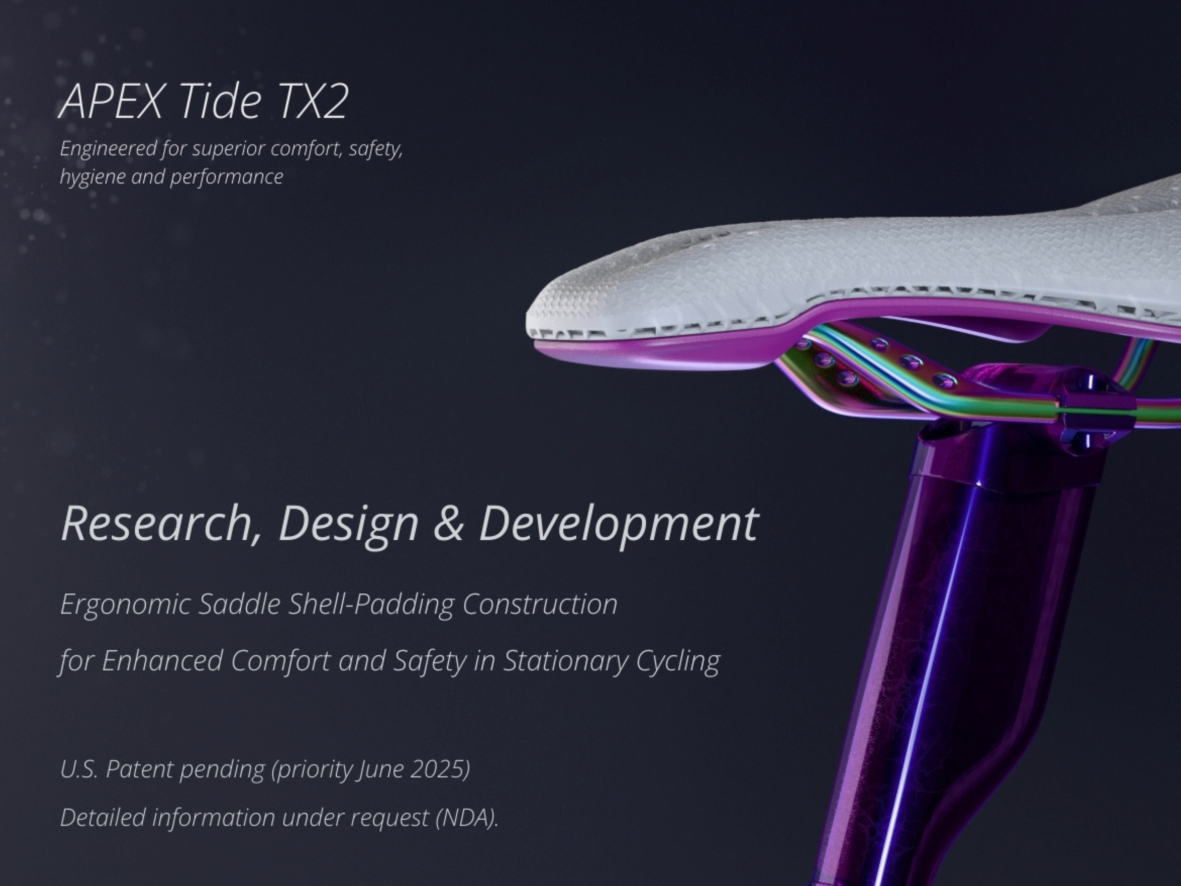RT-LAMP SIGNAL: Molecular Point-of-Care Medical Device for Zika virus detection
by David Alby Medina
Publication date: 31th October 2024
Publication date: 31th October 2024
Design Thinking methodology approach into Product Design Development
This portfolio demonstrates the application of human-centered Design Thinking in developing a medical device prototype. It addresses a product design challenge in an entirely unfamiliar field under tight time constraints. Focused on Product Design, the project tackles the complex, multi-layered problem of the Zika virus, capturing the Research and Product Development journey that led to a point-of-care (POC) device for the pre-diagnosis of the Zika virus. This showcase serves as an extended summary of one of my Master’s projects at the London School of Design and Marketing, completed within a 3-month timeframe. Disclosure date: 9th May 2021.
Project Summary:
This project focuses on developing a point-of-care (POC) molecular diagnostic device designed for early Zika virus detection, specifically targeting underserved remote areas. Built with sustainability in mind, the project applies Design Thinking methodology, incorporating iterative processes such as Google Ventures Sprints, Agile Development, and Scrum. The device aims to provide an accessible, low-cost solution for healthcare workers, students, and professionals in pre-diagnosis scenarios. A multi-disciplinary approach was used throughout the project to address challenges including sustainability, the use of eco-friendly materials, and optimization of production techniques. The project also reflects on the complexities of Zika-associated neurological diseases, including other factors, such as exposure to pesticides, chemicals in drinking water, or other environmental pollutants.
A key focus was the continuous re-evaluation and reframing of the problem to improve outcomes, reduce costs, and mitigate risks through early prototyping and feedback. The final outcome is a digital prototype device with open-source potential, intended for research purposes only.
Introduction
Global interconnectivity accelerates the spread of diseases. The Zika virus, caused by the Aedes aegypti mosquito, is spreading into subtropical and temperate regions. It poses a serious risk to pregnant women, as it is linked to severe birth defects, including microcephaly, where the baby’s brain development is stunted. Along with other mosquito-borne diseases like yellow fever, dengue, and chikungunya, Zika threatens already strained healthcare systems in developing countries.
Photo by Pixabay. Retrieved from Pexels
The Challenge
A well-known technology research center seeks to create a mobile-based solution for pre-diagnosis of Zika Fever in underserved areas.
Objective
• The project aims to create a magnification gadget that can be connected to a smartphone and provide the necessary amplification capability
• The project aims to create a magnification gadget that can be connected to a smartphone and provide the necessary amplification capability
Requirements
• This new feature should be portable, low cost and work side by side to other proposals preventing the spread of the infectious disease
• Articulated with this new device should work a mobile app that will integrate data from different kind of health operators and admit different purposes in the wild
• Said system required visual identity to define the commercial proposition, embrace operators and demystify wrong perceptions.
Photo by Gustavo Fring. Retrieved from Pexels
The project required from team work and collaboration between three fields: Product Design, Interaction design, and Visual Identity.
Methodology
I followed the main stages of the Design Thinking process (Figure 1), combined with the Double Diamond framework from the Design Council (Figure 2) to support interdisciplinary collaboration. For early testing of prototypes, I used a modified version of the Google Ventures Design Sprint (Figure 3).
To enhance teamwork, I integrated Agile Development with Scrum, organizing tasks from a project backlog (Figure 4) into weekly Sprints and tracking progress using Trello classifying in work to be done, doing, and done.
Observation, interviews, and stakeholder conversations were crucial for understanding needs and shaping the project’s direction. During prototyping, I researched hardware suppliers, ISO standards, and usability, ergonomics for feasibility, and ecodesign study for improved sustainibility. 3D polygon modeling and CAD tools were used to build the product.
To enhance teamwork, I integrated Agile Development with Scrum, organizing tasks from a project backlog (Figure 4) into weekly Sprints and tracking progress using Trello classifying in work to be done, doing, and done.
Observation, interviews, and stakeholder conversations were crucial for understanding needs and shaping the project’s direction. During prototyping, I researched hardware suppliers, ISO standards, and usability, ergonomics for feasibility, and ecodesign study for improved sustainibility. 3D polygon modeling and CAD tools were used to build the product.
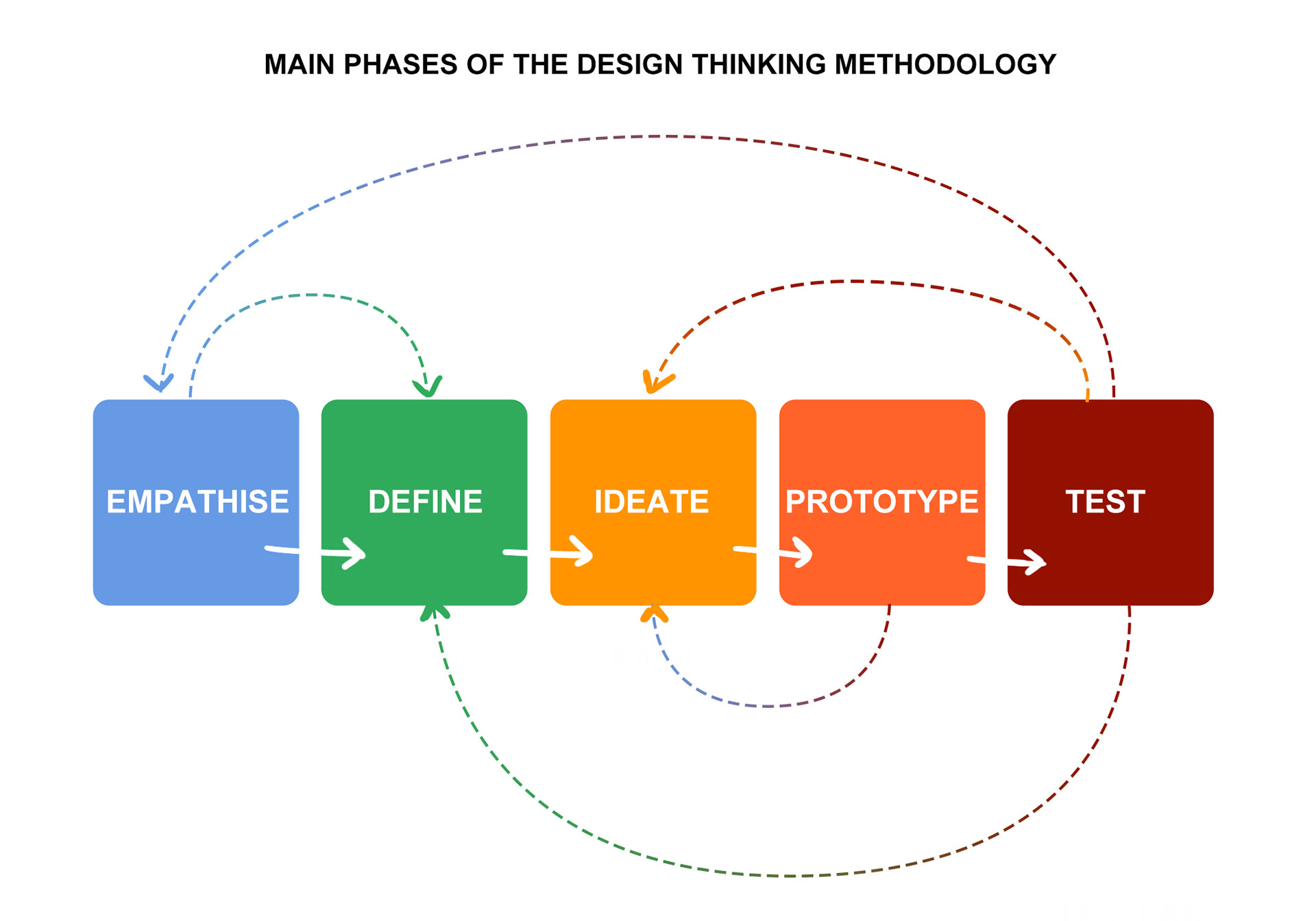
Figure 1. Five phases of the Design Thinking methodology. Adapted from Design Thinking: a 5 Stage Process (Siang & Interaction Design Foundation, n.d.). Retrieved from https://public-media.interaction-design.org/images/uploads/afb760ddf1e9864f6de5d6bdf3065175.jpeg Own elaboration.
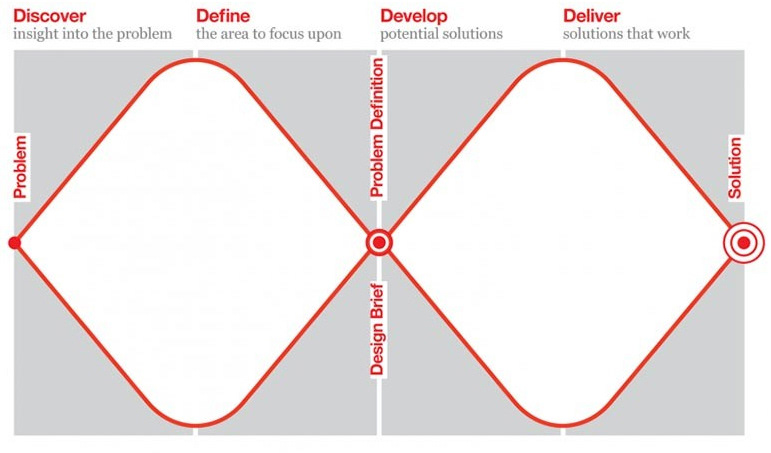
Figure 2. Double Diamond Design Process by Design Council. Retrieved from: https://abeldb.com
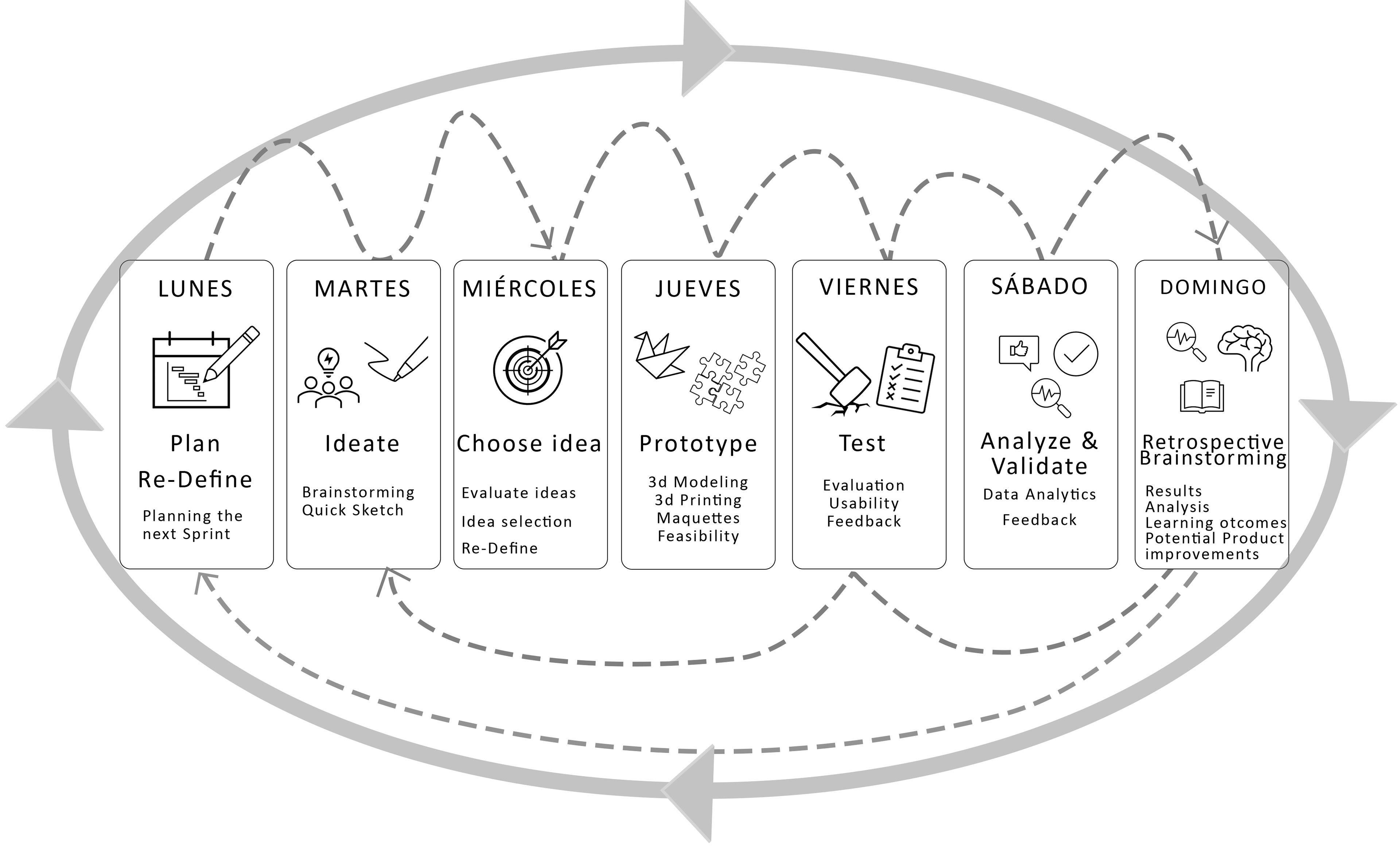
Figure 3. Variant of the Google Ventures Design Sprint process (GV, n.d.). Own elaboration.
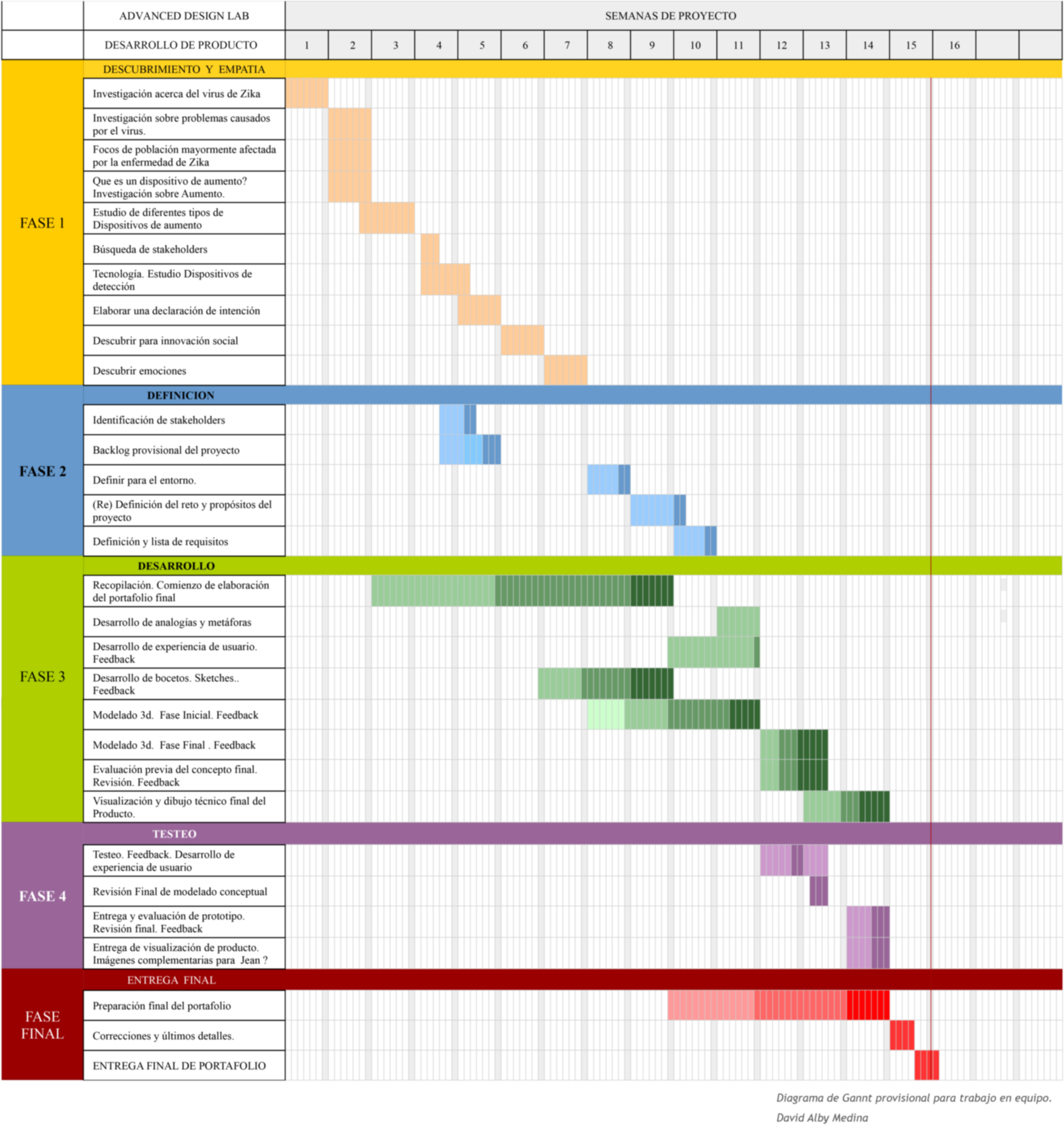
Figure 4. Project backlog
DISCOVERY PHASE
Research
Research on Zika Virus, focusing on key questions such as:
What makes the problem so hard to solve? and Why? These questions provided a foundation for the early research. To organize my thoughts and explore the problem, I used tools such as mindmaps, visual research, and framing.
Research on Zika Virus, focusing on key questions such as:
What makes the problem so hard to solve? and Why? These questions provided a foundation for the early research. To organize my thoughts and explore the problem, I used tools such as mindmaps, visual research, and framing.
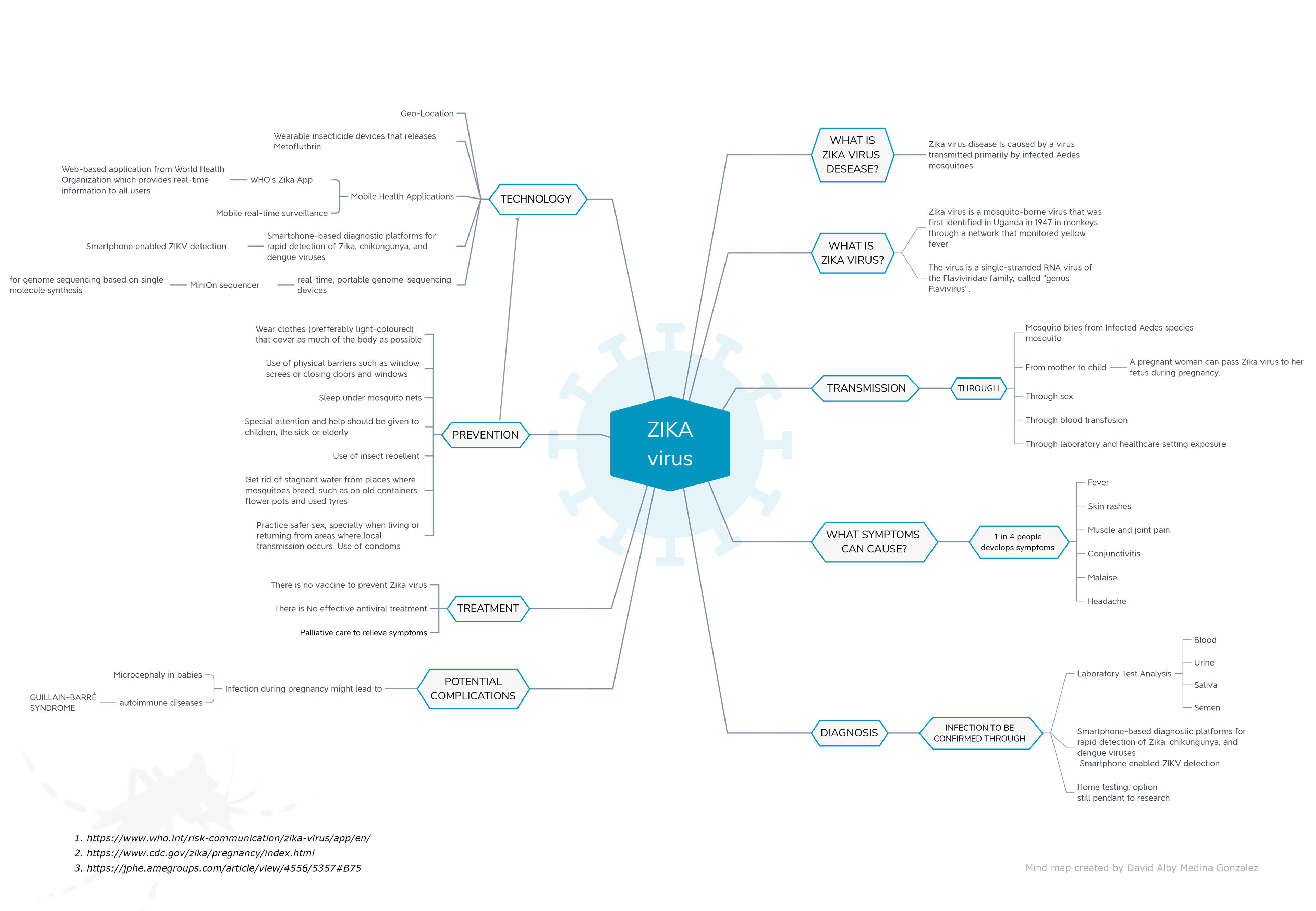
Empathizing with stakeholders
Research and Analysis on stakeholders was essential for understanding their needs, expectations, and potential contributions to the project. This process helped identify key collaborators, align project goals with user requirements, and ensure the solution addressed real-world challenges. I reached out to scientists and personnel involved in medical testing devices, but soon realized that my initial research was insufficient, the questions were poorly formulated, and the project targets might have been overly ambitious. This reflection led to critical questions: What are the actual needs of the users? Who are the real stakeholders?
Research and Analysis on stakeholders was essential for understanding their needs, expectations, and potential contributions to the project. This process helped identify key collaborators, align project goals with user requirements, and ensure the solution addressed real-world challenges. I reached out to scientists and personnel involved in medical testing devices, but soon realized that my initial research was insufficient, the questions were poorly formulated, and the project targets might have been overly ambitious. This reflection led to critical questions: What are the actual needs of the users? Who are the real stakeholders?
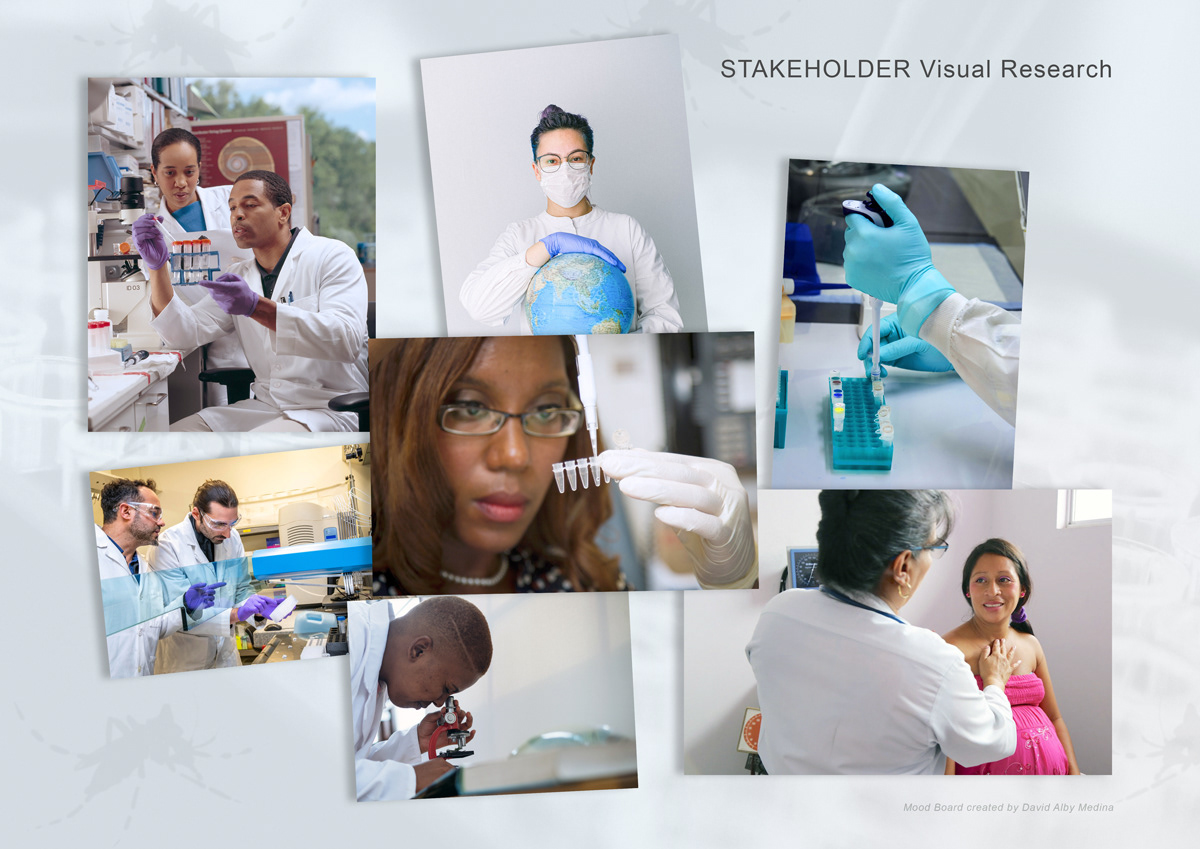
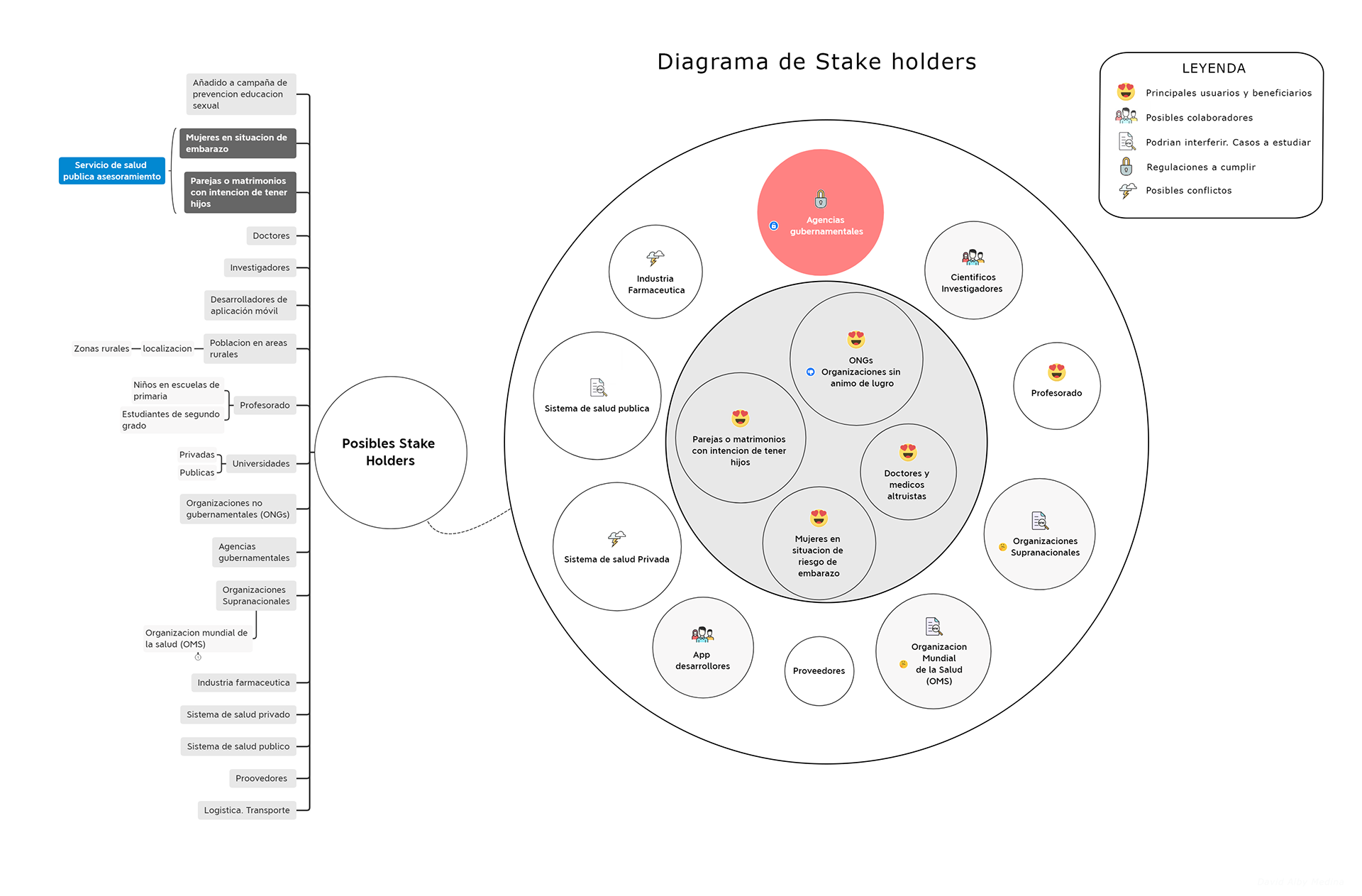
Discovering through Emotions
During this phase, I also explored visual research using Edward de Bono’s "Six Thinking Hats", which allowed me to approach the problem from different perspectives. By alternating between logical, creative, and emotional thinking, I was able to look at the challenges from various angles, leading to more effective brainstorming and problem solving.
During this phase, I also explored visual research using Edward de Bono’s "Six Thinking Hats", which allowed me to approach the problem from different perspectives. By alternating between logical, creative, and emotional thinking, I was able to look at the challenges from various angles, leading to more effective brainstorming and problem solving.
Innovation Framework
The design research phase was also guided by the Innovation Framework developed by Kees Dorst, a well structured approach based on Design Thinking. The frame creation process (Figure 5 on the right side) allowed me to tackle wicked problems, complex issues that are difficult to define through a step by step process of understanding and exploration.
The design research phase was also guided by the Innovation Framework developed by Kees Dorst, a well structured approach based on Design Thinking. The frame creation process (Figure 5 on the right side) allowed me to tackle wicked problems, complex issues that are difficult to define through a step by step process of understanding and exploration.
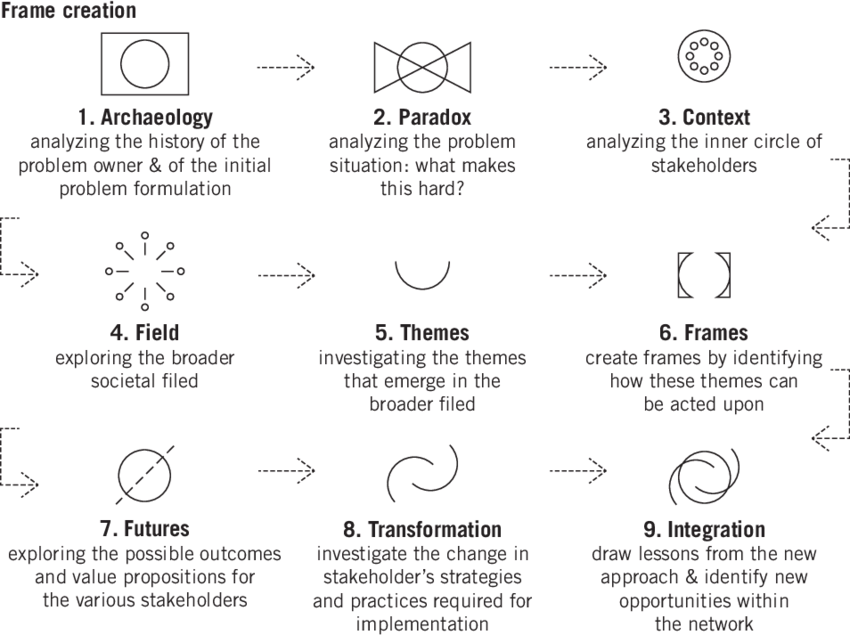
Figure 5. Visualization of the nine steps of frame innovation. Retrieved from https://www.researchgate.net/publication/326170772_A_Transdisciplinary_Approach_to_Wildlife_Crime. Source: Dorst, K., Kaldor, L., Klippan, L., and Watson, R. (2016). Designing for the common good: A handbook for innovators, designers, and other people BIS, Amsterdam
Zoom in, Zoom out: Framing as a tool for Innovation
A key element of my design approach was the concept of framing, which I revisited throughout the project using mind maps. This approach was inspired by Powers of Ten, the 1977 short film by Charles and Ray Eames, which demonstrates the fractal nature of scale at both macro and micro levels. The concept of zooming in and out, not only to view the problem in the context of nature's vastness and the measurable universe but also to consider it from various perspectives, became a powerful tool. This "think outside the fractal world" mindset made the discovery phase a space for free exploration, allowing imagination to flow without the limitations of bias or preconceived ideas.
A key element of my design approach was the concept of framing, which I revisited throughout the project using mind maps. This approach was inspired by Powers of Ten, the 1977 short film by Charles and Ray Eames, which demonstrates the fractal nature of scale at both macro and micro levels. The concept of zooming in and out, not only to view the problem in the context of nature's vastness and the measurable universe but also to consider it from various perspectives, became a powerful tool. This "think outside the fractal world" mindset made the discovery phase a space for free exploration, allowing imagination to flow without the limitations of bias or preconceived ideas.
The mind maps (Figures 6 and 7 on the right) showcase how the problem evolved through different stages of research and development. This continuous process of reframing allowed for the redefinition of the project's scope when necessary, leading to more refined outcomes as the project advanced.
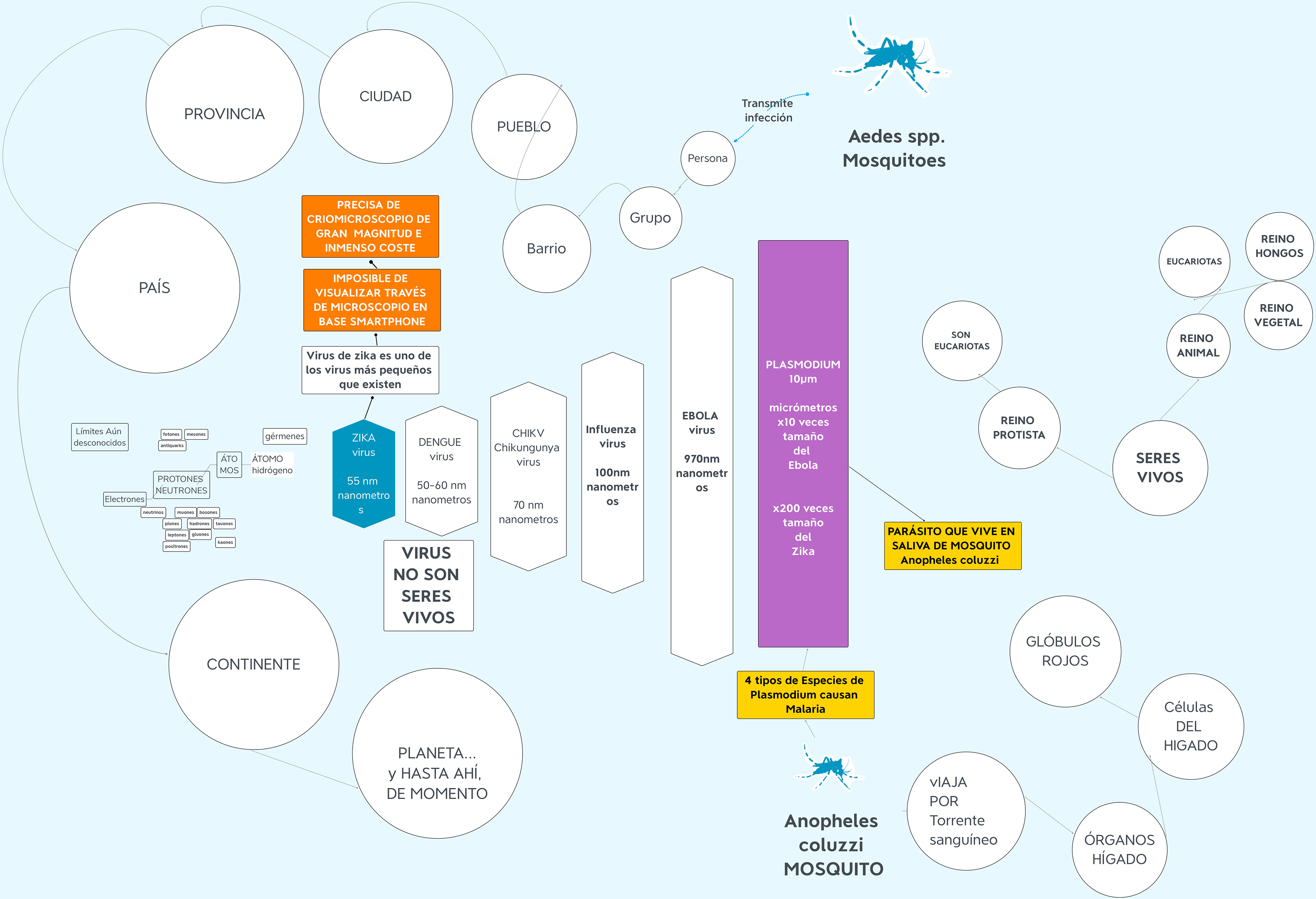
Figure 6. Framing mind map at earlier stage of research and development
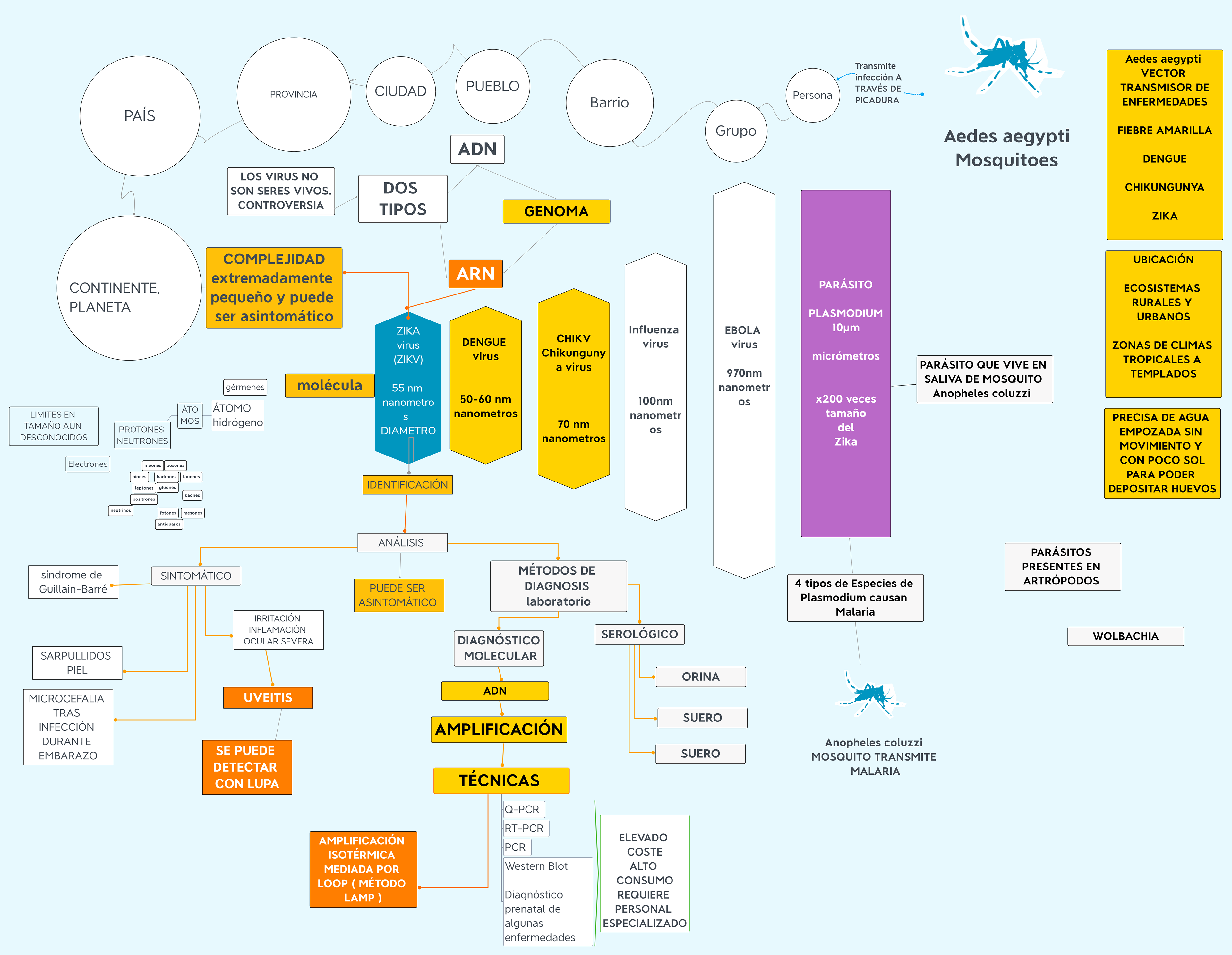
Figure 7. Framing mind map at more advanced stage. Research inspired by "Powers of Ten" and Innovation Framework from Kees Dorst.
SPRINT RETROSPECTIVES: Learning from mistakes
During the discovery phase, we conducted a Sprint retrospective by asking two key questions: What went well? and What went wrong? Though the process was chaotic and full of mistakes, it taught me several important lessons:
Question Everything
Always challenge the problem and its premise. Avoid making assumptions.
The initial challenge was exploring amplification devices. Learning that Zika could cause uveitis and skin rashes, I mistakenly focused on designing lenses for eye or skin examination. I ended up wasting time sketching magnifying tools, and too early, simply because I blindly followed the client request.
The initial challenge was exploring amplification devices. Learning that Zika could cause uveitis and skin rashes, I mistakenly focused on designing lenses for eye or skin examination. I ended up wasting time sketching magnifying tools, and too early, simply because I blindly followed the client request.
Take the time to research before start
In the search for virus detection methods, I explored portable microscopes, gradually developing more sophisticated designs. However, I later discovered the virus was too small to be detected without a cryogenic electron microscope, costing over a million dollars! This reinforced the critical lesson of thoroughly researching before jumping into solutions based on assumptions.
In the search for virus detection methods, I explored portable microscopes, gradually developing more sophisticated designs. However, I later discovered the virus was too small to be detected without a cryogenic electron microscope, costing over a million dollars! This reinforced the critical lesson of thoroughly researching before jumping into solutions based on assumptions.
Question what the client is asking for
As I progressed, I realized that blindly following the client's requests wasn't always effective. The real goal is to tackle a multifaceted problem. But is the research center truly aligned with this purpose? Conflicts of interest arise. Even if they are genuine in addressing the issue, if everyone follows the same approach the client suggests, what are the chances of discovering new solutions?
As I progressed, I realized that blindly following the client's requests wasn't always effective. The real goal is to tackle a multifaceted problem. But is the research center truly aligned with this purpose? Conflicts of interest arise. Even if they are genuine in addressing the issue, if everyone follows the same approach the client suggests, what are the chances of discovering new solutions?
Revisiting Problem Framing
Redefining the problem early reduces the risk of project failure. During the discovery phase, I had to repeatedly re-frame and question the problem, constantly seeking alternative perspectives in areas unfamiliar to me, like molecular biology and diagnostics. This process of framing and re-framing was crucial to the project's development.
Redefining the problem early reduces the risk of project failure. During the discovery phase, I had to repeatedly re-frame and question the problem, constantly seeking alternative perspectives in areas unfamiliar to me, like molecular biology and diagnostics. This process of framing and re-framing was crucial to the project's development.
ECO-DESIGN STRATEGY
Development of a Low Environmental Impact Strategy
Sustainable design and eco-design. Both methods aim to minimize environmental impact throughout the product's lifecycle, from material selection to disposal.
Sustainable design and eco-design. Both methods aim to minimize environmental impact throughout the product's lifecycle, from material selection to disposal.
Here is a brief sumary example of eco-design strategies :
Material Selection: Use bioplastics (PET, PE), recyclable PCR strips, and silicone compliant with pharma standards (USP Class VI, ISO 10993).
Material Reduction: Minimize product volume, material thickness, and weight to reduce carbon footprint and optimize production costs.
Production Techniques: Leverage 3D printing for precise material placement, symmetrical assembly, and energy savings. Distribution: Utilize 3D printing as a low-cost, efficient distribution method, potentially providing printable files.
Usage Impact Reduction: Minimize electrical consumption and disposable plastic waste through multiplexing (analyzing multiple elements in a single sample).
Life Cycle Optimization: Ensure product is durable, repairable, and maintainable, fostering user relationships.
End-of-Life Optimization: Focus on recycling, reusability, and repair.
Concept Development: Continue refining the prototype and exploring new possibilities.
Material Reduction: Minimize product volume, material thickness, and weight to reduce carbon footprint and optimize production costs.
Production Techniques: Leverage 3D printing for precise material placement, symmetrical assembly, and energy savings. Distribution: Utilize 3D printing as a low-cost, efficient distribution method, potentially providing printable files.
Usage Impact Reduction: Minimize electrical consumption and disposable plastic waste through multiplexing (analyzing multiple elements in a single sample).
Life Cycle Optimization: Ensure product is durable, repairable, and maintainable, fostering user relationships.
End-of-Life Optimization: Focus on recycling, reusability, and repair.
Concept Development: Continue refining the prototype and exploring new possibilities.
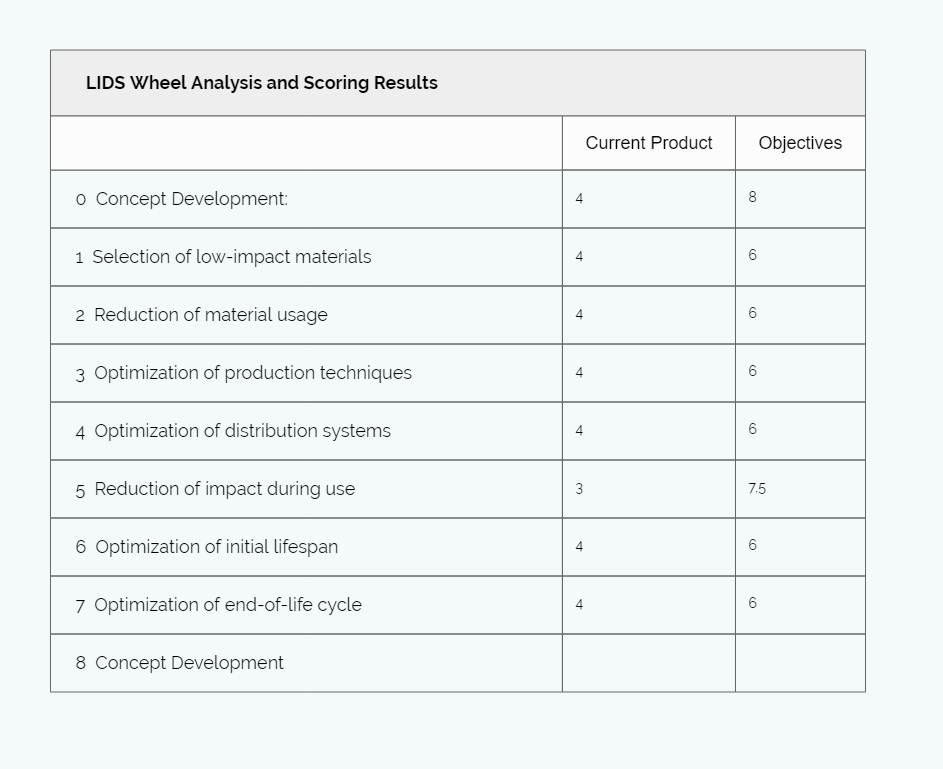
LIDS Wheel Analysis and Scoring Results
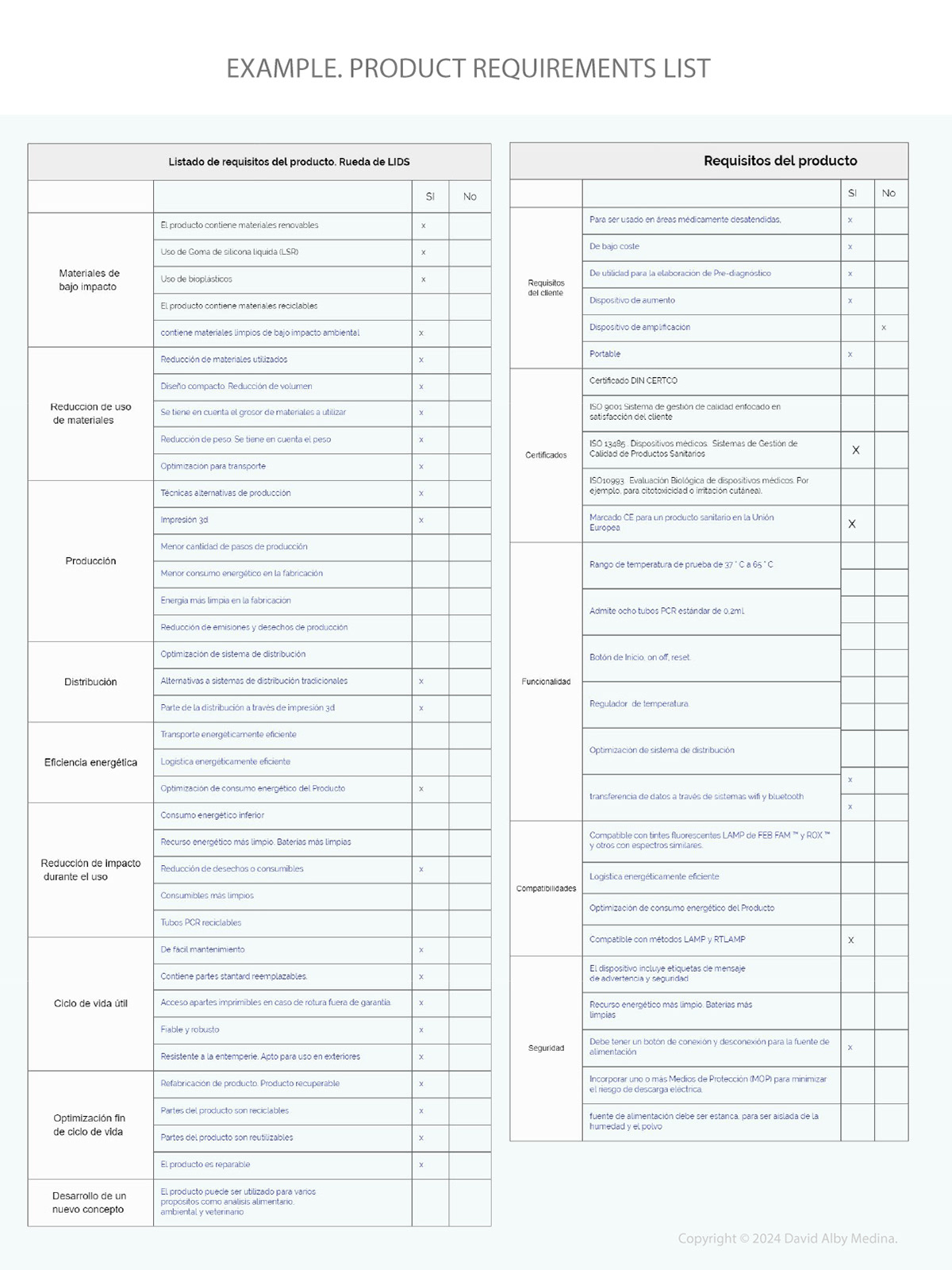
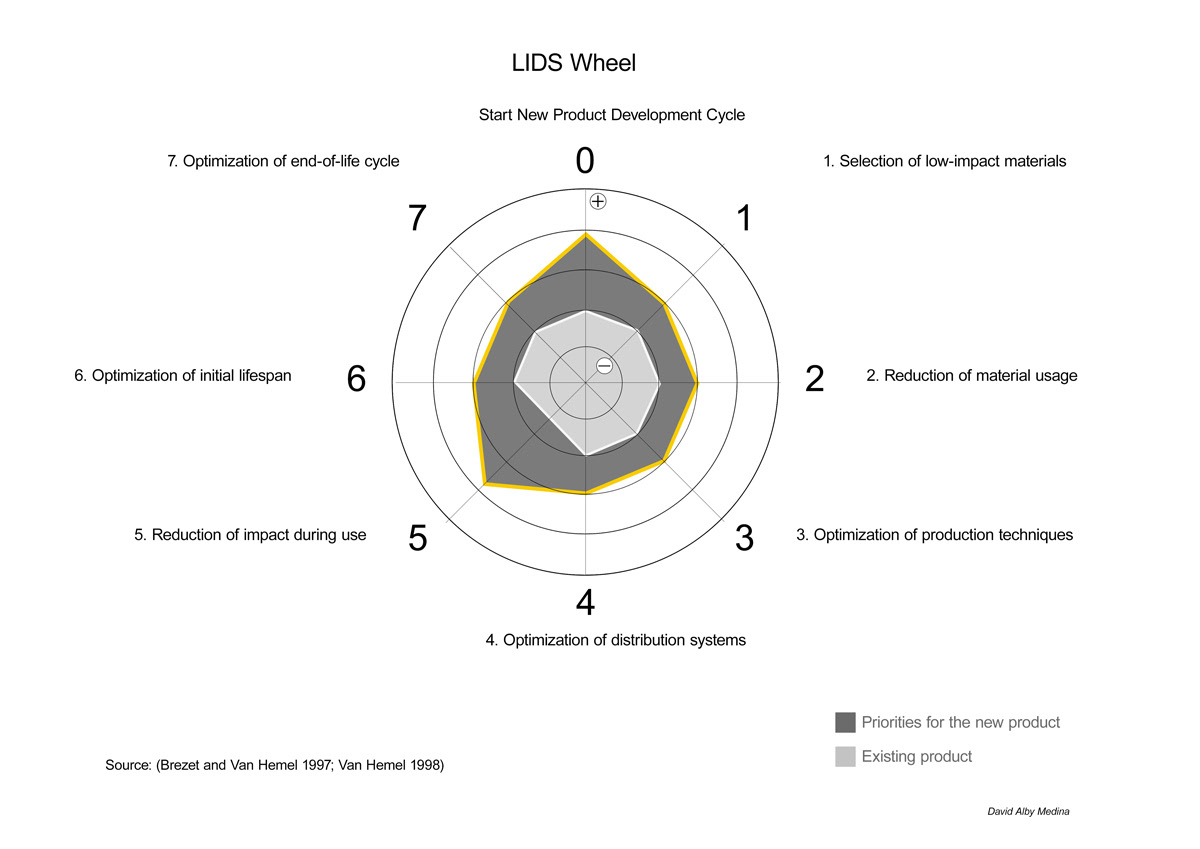
LIDS Wheel showing current status (at the time) and new product requirements. Source: Brezet and Van Hemel 1997; Van Hemel 1998
RETROSPECTIVE SPRINT
Project Reflections
Research and communication with stakeholders at early stage were crucial for design definition. One of the biggest challenges during the discovery phase was formulating the right questions, particularly when engaging with experienced stakeholders like doctors and scientists. It was essential to have a solid foundation to ask meaningful questions and hold productive conversations. After some initial mistakes and failed interviews, I could gather and analyze the information needed to define the idea.
Project Reflections
Research and communication with stakeholders at early stage were crucial for design definition. One of the biggest challenges during the discovery phase was formulating the right questions, particularly when engaging with experienced stakeholders like doctors and scientists. It was essential to have a solid foundation to ask meaningful questions and hold productive conversations. After some initial mistakes and failed interviews, I could gather and analyze the information needed to define the idea.
Defining product design requirements. Identifying users and their needs helped define design requirements, such as determining well plate capacity, understanding regional regulations like FDA approval, and considering relevant ISO standards. Insights from professionals in experimental device development also proved invaluable in addressing the key challenges to make the design more user-focused. The sustainability analysis revealed several unresolved issues, prompting a need to address the project swiftly and effectively. It's been difficult to get expert feedback, this creating uncertainty and leading me to consider a change in direction due to lack of knowledge in the topics involved.
Decision making and planning. After deciding to continue developing the RT-LAMP device, I accelerated sketching, packaging, and modeling to anticipate design challenges and gather stakeholder feedback quickly. The Sprint process reduced risks and moved the project forward, allowing for earlier Ideation and prototyping.
FIRST ITERATIONS
During this definition phase, I intensively applied the Google Ventures Sprint process (see Figure 8), based on Agile and Design Thinking methodologies. This enabled prototyping and evaluation of early versions of the product, followed by a critical team retrospective, which was essencial to anticipate, assess and mitigate risks at early stages. This iterative process would be revisited many times throughout the project. Sometimes built a quick prototype, then destroyed it completely because it did not work. This is part of the learning by doing approach to Design Thinking methodology.
Weekly Sprint Process:
• Monday-Tuesday: Planned tasks, initial 2D/3D sketches, review on engineering package and materials.
• Wednesday: Shared sketches and impressions in a meeting, discussing branding and stakeholder interactions. Agreed to proceed with the first prototype.
• Thursday: Built a rough prototype concept focused on functionality over aesthetics, while analyzing existing devices, materials, and hardware suppliers.
• Friday: Awaited feedback from stakeholders, who were not always available. Anticipation planning for feedback could have improved timing.
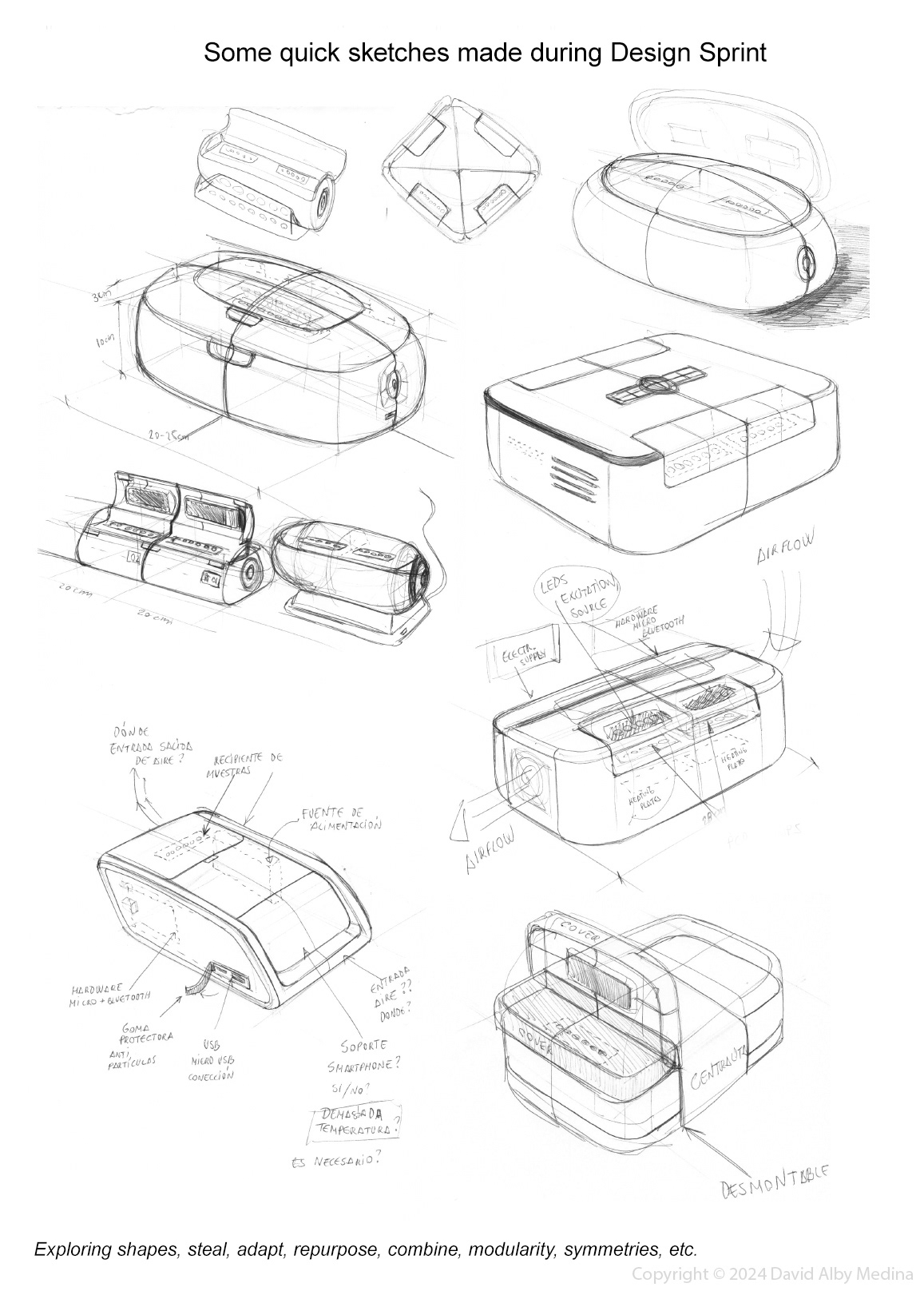

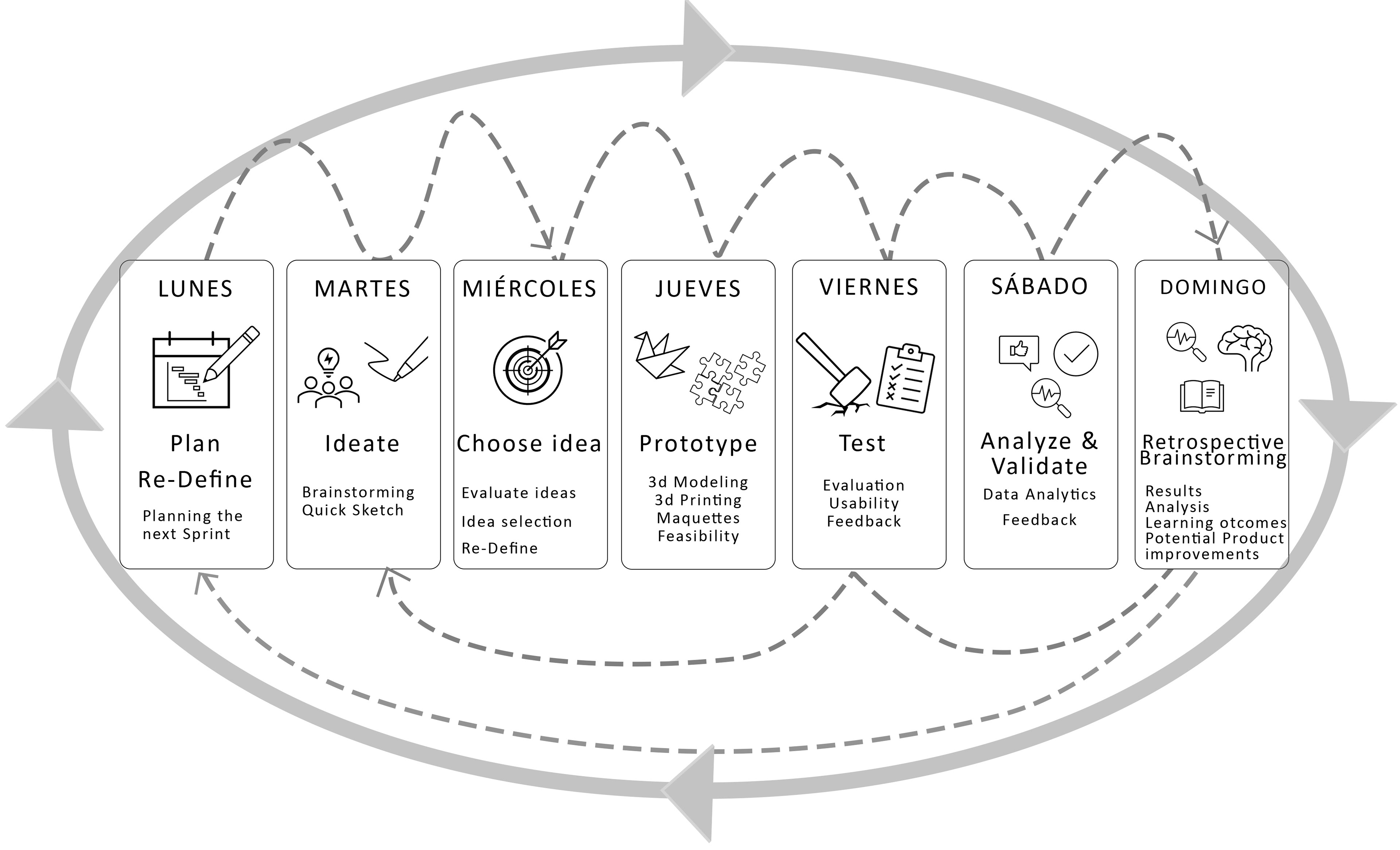
Variant of the Google Ventures Design Sprint process (GV, n.d.). Own adaptation.
Customer journey and personas
Creating personas and developing Customer Journey maps helped to define certain aspects of the device and its final usage. The exercises were quite weak at first instance, but the images can serve as an example.
At this stage, I primarily considered three main purposes or types of use: field testing, lab research, and testing individuals for a preliminary diagnosis of the Zika virus.
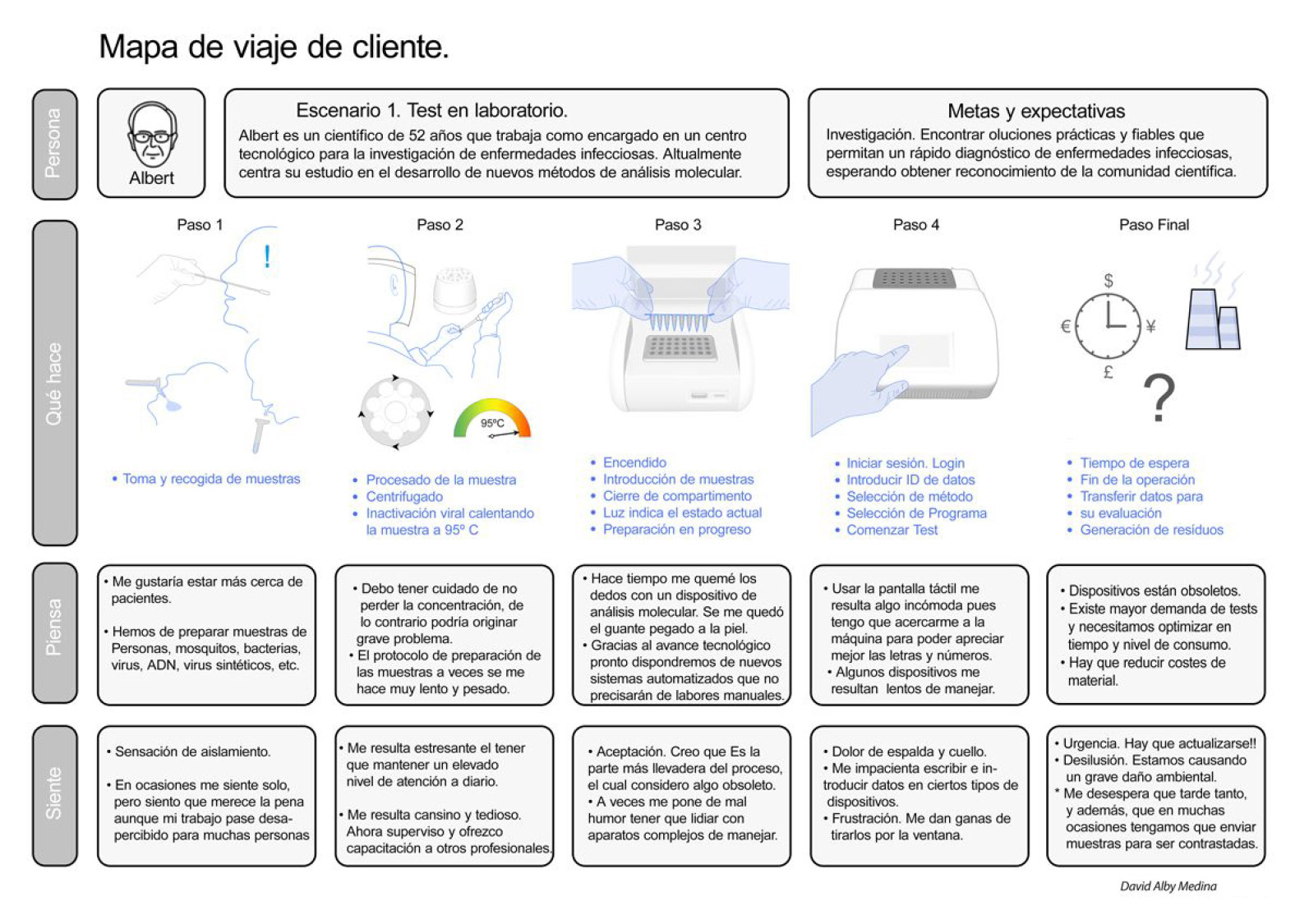

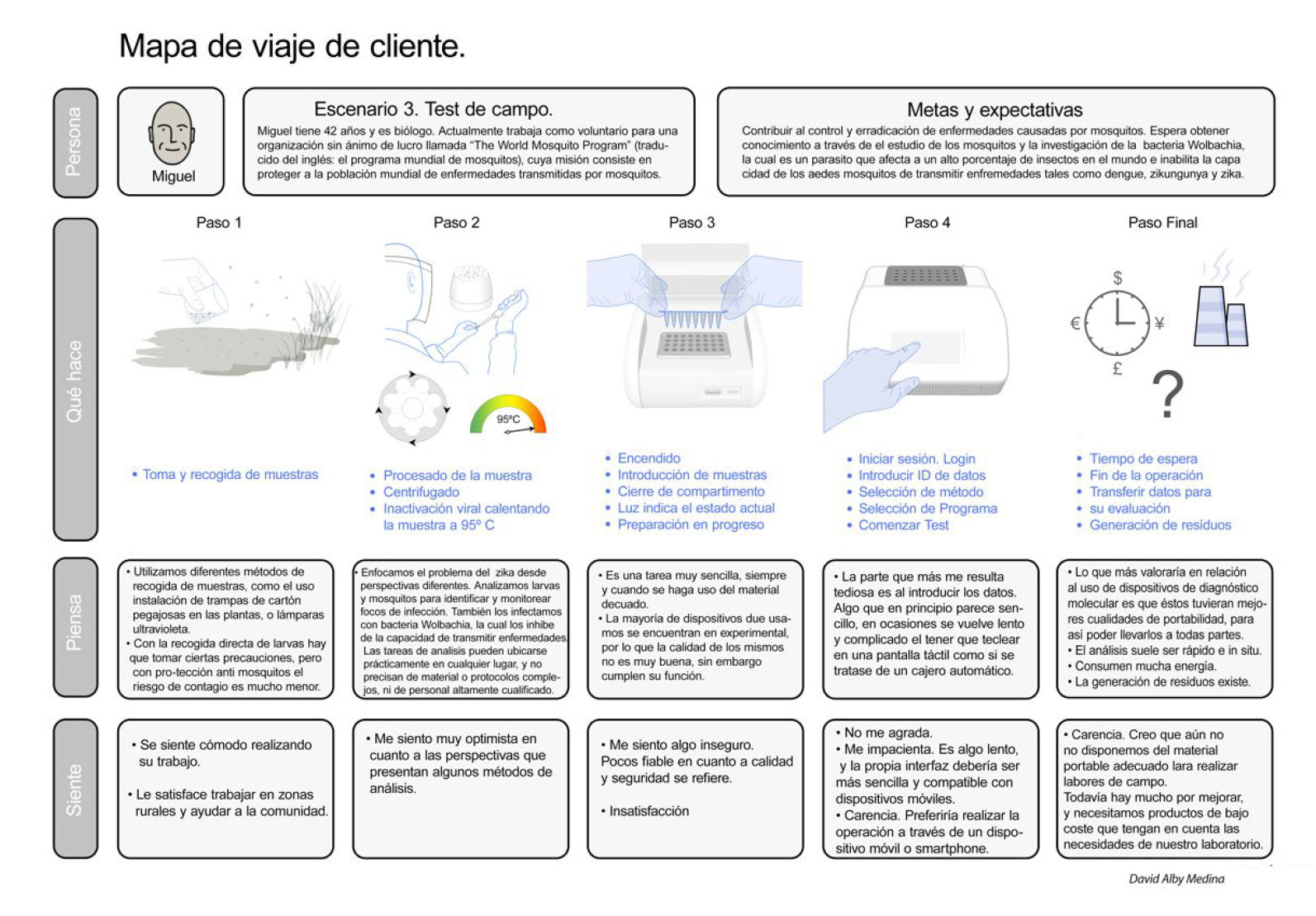
IDEATION
It can be noticed that I had already revisited the Ideation phase before, through iterative 1-2 week Sprints. This non-linear approach from Design Thinking and Design Council allowed me to revisit any project phase as needed, keeping the process flexible and focused. During the definition phase, I began early design iterations using Google Sprints, which helped set a clear direction. By then, I had gathered ample brainstorming material, including sketches and 3D conceptual models, with additional insights on feasibility and hardware setup.
During Discovery, I gathered extensive information, including stakeholder feedback. I came to understand that the amplification signal—scientifically known as Loop-Mediated Isothermal Amplification (LAMP)—was essential to the device’s development. Still, the concept was rough, and the initial design didn’t align with real use cases. Many ideas, no matter how promising they sound, often hit reality checks during brainstorming or discussions. Ignoring feedback was a mistake and a valuable lesson.
Now, it’s time to refine the idea and bring it closer to practical, real world applications.Analogies and Metaphors
Analogies and metaphors helped align scientific concepts with the design vision. The idea of signal amplification in Loop-Mediated Isothermal Amplification (LAMP) is represented through the metaphor of a light spectrum revealing what the human eye cannot see at first glance, a chain of molecular reactions covering a broad range of signals, linked in a spiral inspired by scientific literature. This inspired the product’s form and name, reflecting attributes like strength, continuity, and reliability. Terms like STRONG, CYCLE, and SIGNA (from Latin, meaning "signs") evoke a hidden message that light reveals. The final name, SIGNAL, captures the essence of amplifying unseen details.
Sprint Iterations
Throughout the Design Council process, I continually revisited the main stages of design thinking: Empathize, Define, Ideate, Prototype, Test, and Deliver, using Google design sprints to accelerate and refine the design within a short timeframe. This approach combined both methodologies effectively.
With a clear direction in mind, I could optimize time and leverage my 3D modeling skills effectively, focusing on the project with a broader perspective while working more efficiently. As the prototype evolved in form and feasibility, more detailed solutions emerged, including a sealed battery compartment and an innovative floating armature.
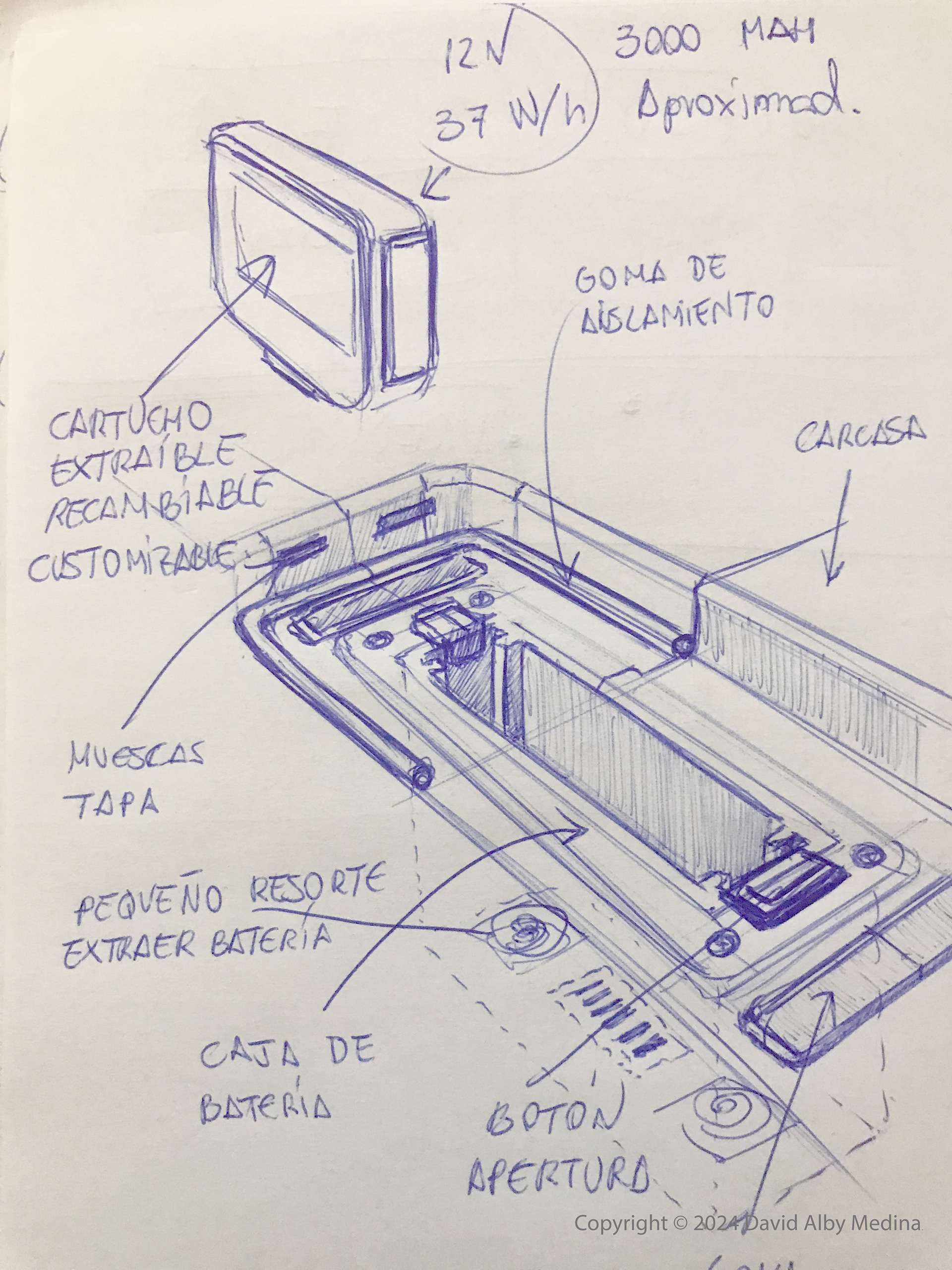
Sketch design of a battery cage with rubber insulation and safety release mechanism for protection and secure integration
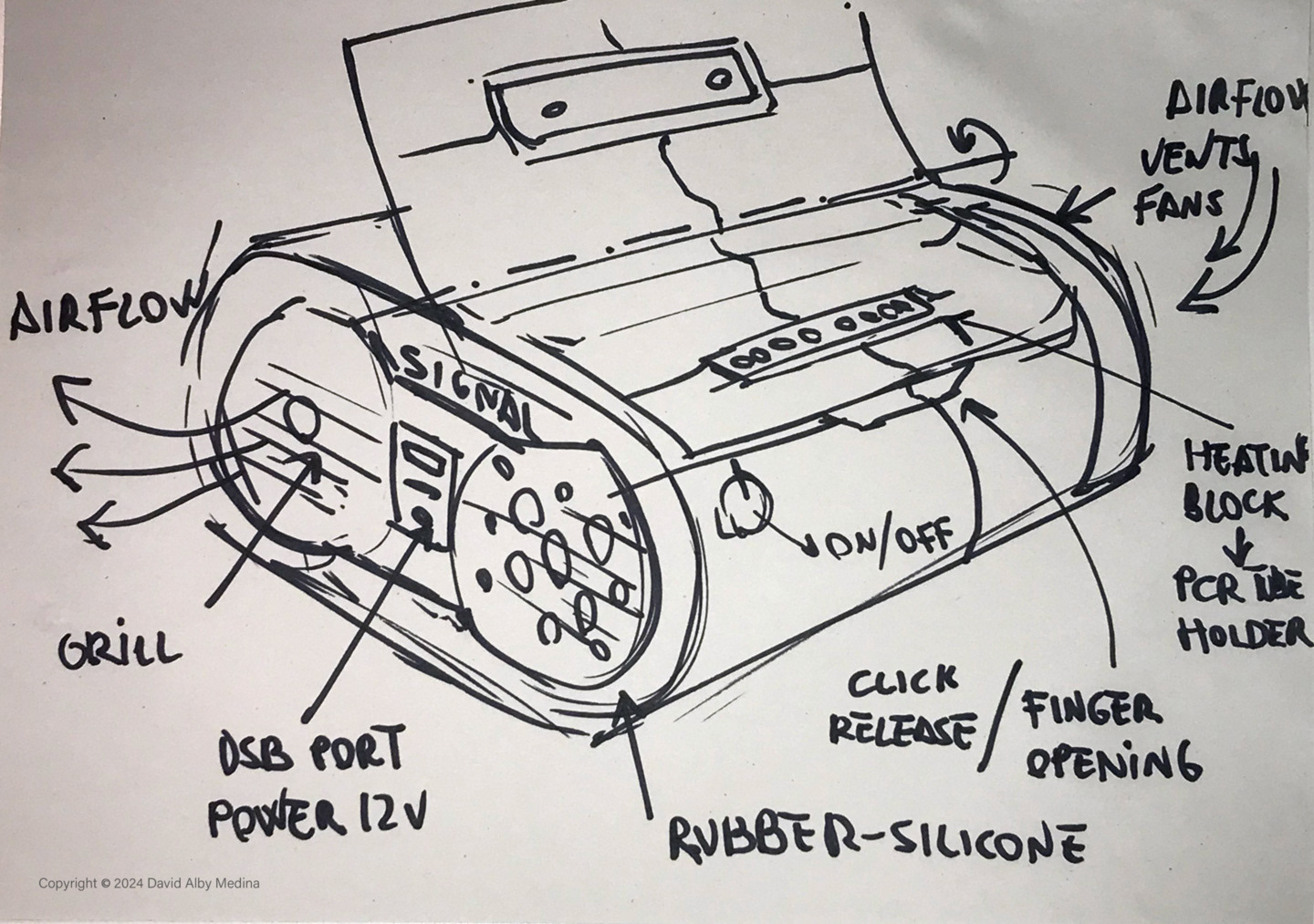
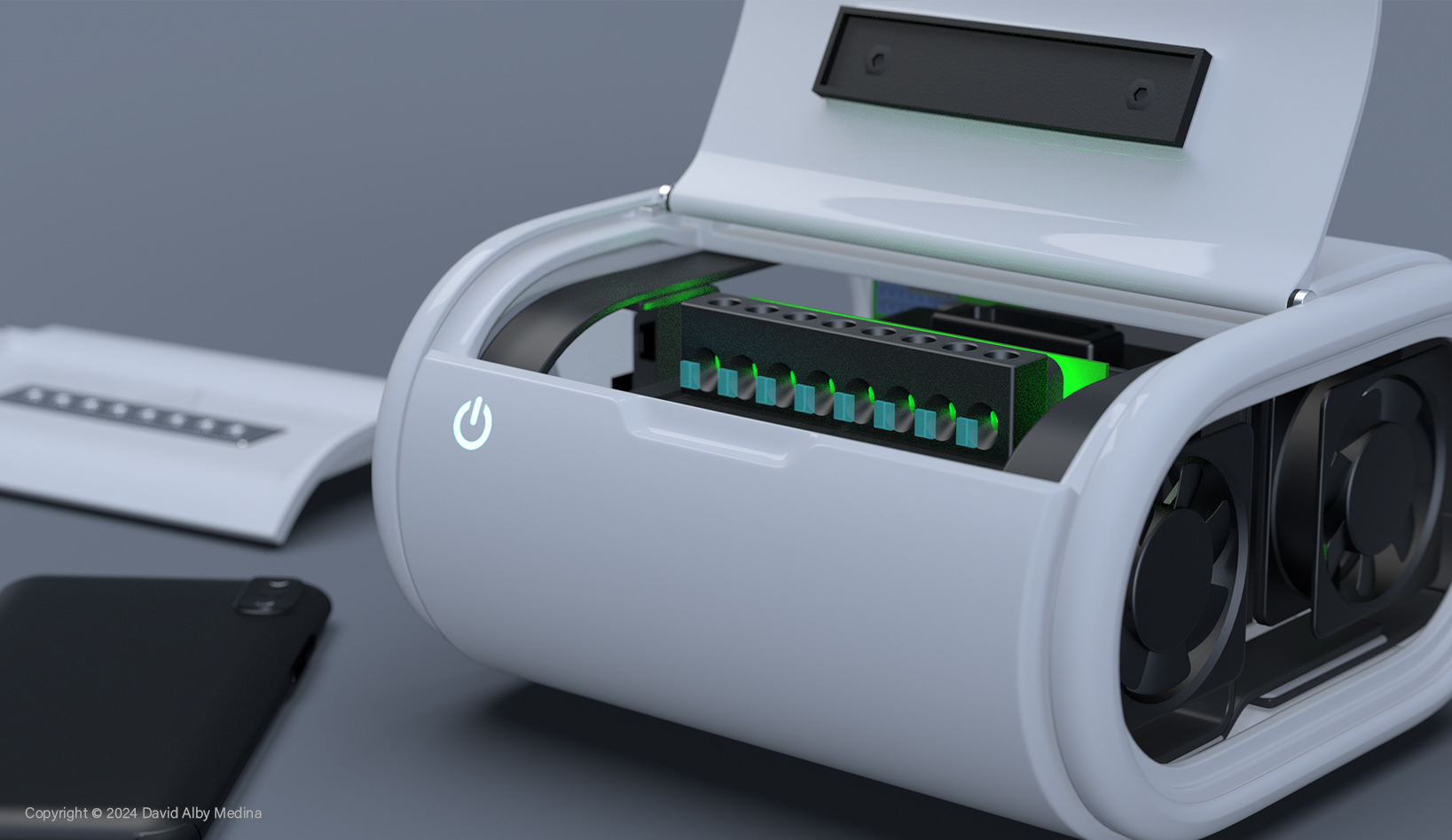
Studying existing optical detection methods was essential for designing adaptable configurations in the RT-LAMP device. Still this is the key topic where I am expecting to fail the most due to my lack of knowledge in non familiar topics and fields.
By hypothetically testing various methods and exchanging feedback with stakeholders I came to the idea of building a modular and configurable device that can support multiple detection methods, allowing the use of both UV and RGB LEDS, as well as other affordable components such as color filters, and even RGB photodiodes.
By hypothetically testing various methods and exchanging feedback with stakeholders I came to the idea of building a modular and configurable device that can support multiple detection methods, allowing the use of both UV and RGB LEDS, as well as other affordable components such as color filters, and even RGB photodiodes.
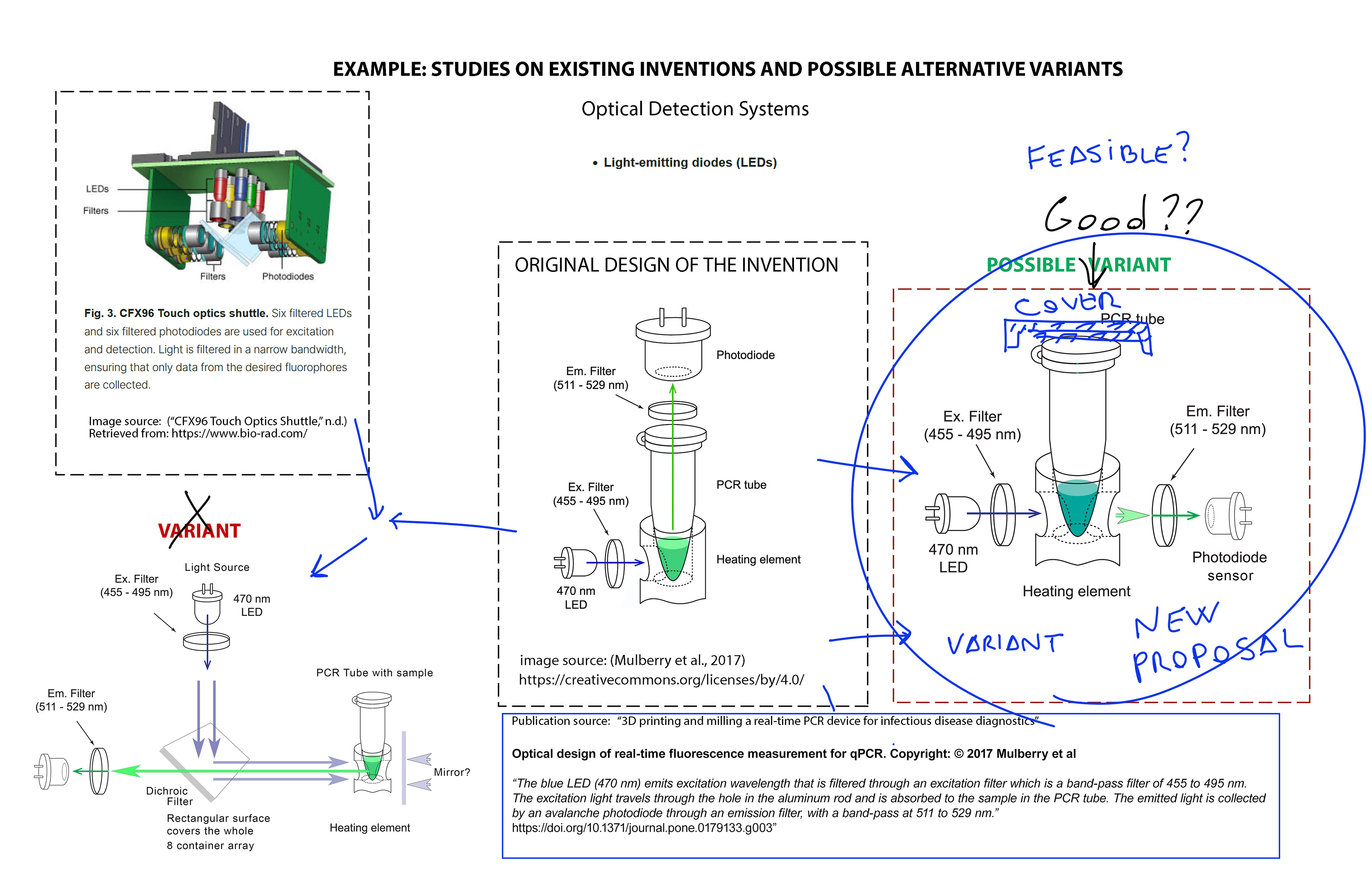
Modular Design
The DCODE SIGNAL RT-LAMP prototype features a modular design that allows for easy upgrades and component replacements, adapting to various diagnostic applications in research and academic environments.
The PCR tube and filter holders are fabricated from high-temperature resistant materials to ensure stability during thermal cycling.
The cooling system includes fans, an aluminum heat sink, and Peltier cells to maintain stable temperature control, essential for effective amplification.
The modular LED and filter system supports fluorescence and colorimetric detection setups.
Filter holders supporting the use of affordable and customized color filters as well as bandpass filters. These holders are equipped with thin magnets for easy replacement. Felt material may be added in the holding slots for better care of filters.
RGB photodiodes are integrated to detect color and light intensity, enabling both colorimetric diagnostics and fluorescence detection. Calibration is managed via a Bluetooth-connected mobile app, eliminating the need for bandpass filters, though they can still be optionally placed between the PCR tube holder and the RGB photodiode array.
The main case is a 3D-printed monoblock with internal guides that facilitate the installation and removal of the floating armature, which contains most hardware components except the battery compartment. The battery compartment must be removed before installing or removing the inner armature, which operates along the longitudinal axis for easy access and replacement.
Armature design for impact absorption
The RT-LAMP device features a sealed battery compartment and a novel floating armature designed to absorb impacts and protect the internal components from vibrations. The use of 3D printing technology makes this complex layout feasible and easily configurable, simplifying maintenance and replacement.
FDM printing reduces production costs and minimizes toxicity and contamination risks compared to resin printing, enhancing safety in biological applications. The choice of printing method should depend on the specific requirements of each component, as both FDM and resin printing have their respective advantages and limitations.
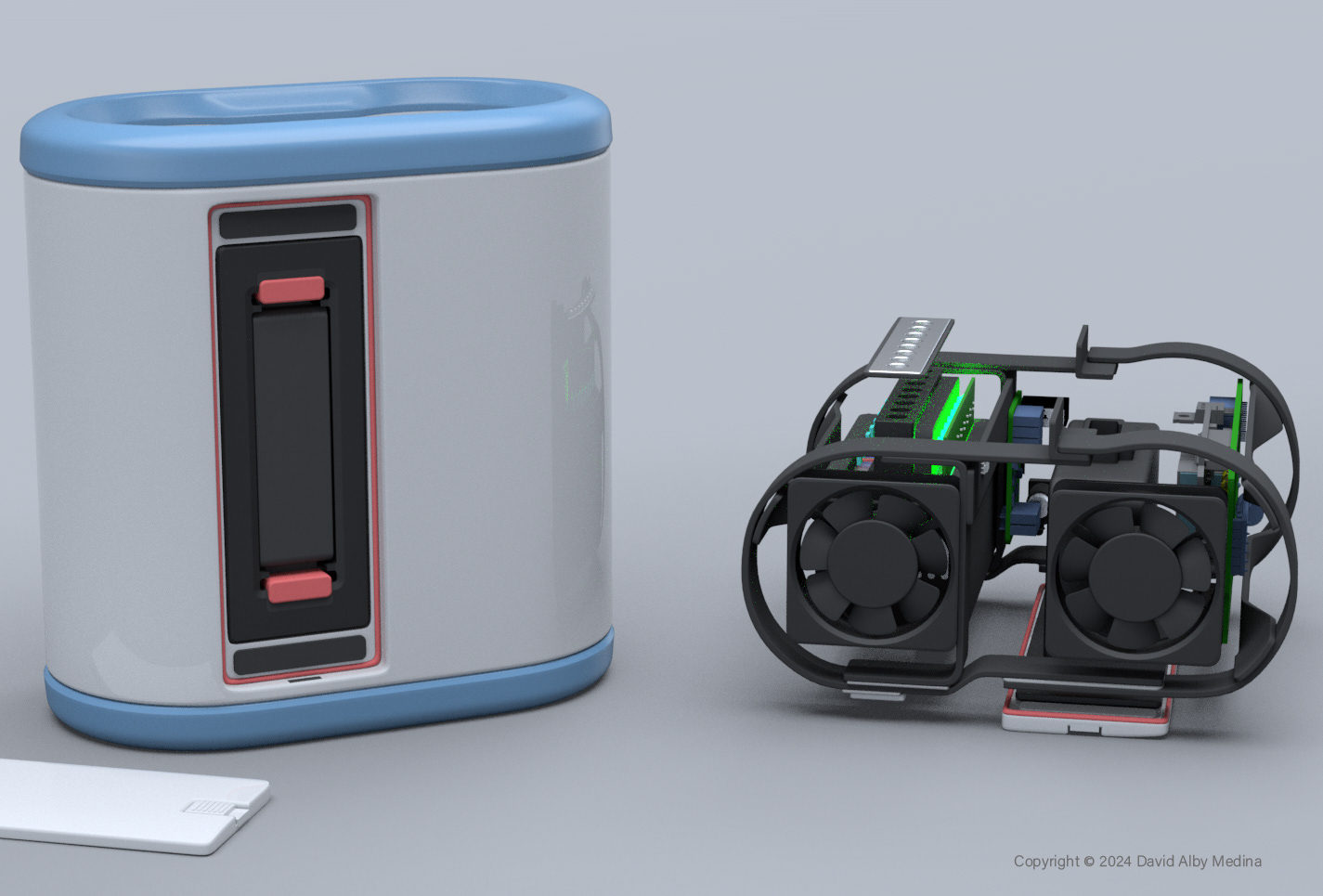
This image showcases the RT-LAMP device with the casing removed to reveal the internal structure. On the left shows a modular, replaceable lithium-ion (Li-ion) battery pack. On the right side, The device is performing A simple test with RGB Emission LEDs, with array set of 3-channel RGB Photodiods on the other side of the well plate and heating block.
The battery compartment was designed to accommodate custom battery cartridges. The battery system is a modular, replaceable lithium-ion pack (12V, 3000mAh), designed for easy swapping and secure thermal insulated housing. The compartment incorporates notches and a small spring mechanism, enabling easy battery removal. A dedicated release button further enhances usability, allowing straightforward access to the battery without requiring tools. Rubber insulation and secure housing ensure that the battery remains stable and safe during operation, even in adverse conditions. Ideal for portable diagnostics in field environments.
Resin printing methods provide higher accuracy and faster production times. Parts can be printed effectively in humid environments but involve higher material costs comparing to parts built with FDM printing method. This approach is suitable for experimentation and rapid prototyping, enabling efficient reproduction of parts, with an average production rate of approximately 10 mm/hour using consumer-grade 3D printers.
When utilizing Ultra Violet (UV) LED setups in the modular detection system, the use of black, UV-resistant resins or UV protective films is recommended to extend the durability of components exposed to UV light.
Image. Resin 3d printing build plate with PCR tubes, filter and color sensor holders printed high-temperature resistant uv resins
Added Value Proposition: Design Justification
To build this value-added proposal (See figure on right side), I applied a "zoom in and out" metaphorical exercise inspired by the “Powers of Ten™ (1977)” video (Eames Office Channel, 2010). This technique allowed for retrospective analysis and reframing of the project, helping to validate and adapt the prototype in the final development stage.
The device supports a dual diagnostic approach addressing viral and bacterial threats, utilizing LAMP and RT-LAMP methods. The device can detect RNA-based viruses (like Zika, Chikungunya, and Dengue) and DNA-based tuberculosis (TB-LAMP), offering field and laboratory testing. It supports both colorimetric and fluorescence-based signal detection, ensuring adaptability for use in varied settings like hospitals, homes, and schools. Additionally, the device can potentially support vector control studies, like monitoring Wolbachia-infected mosquitoes This multifaceted approach broadens its application in public health and ecological monitoring.
DISCUSSION
I have designed a portable medical device, of the Point of Care (POC) type, low-cost and compatible with LAMP and RT-LAMP molecular diagnostic techniques. This device will provide the necessary amplification capability for an effective, simple, and low-cost pre-diagnosis, thus helping to prevent the spread of Zika fever in hard-to-reach rural and remote areas where the rate of infection is higher. The device, named DCODE SIGNAL is specially designed for field testing and improvised mobile clinics. Its durability, portability, and ease of use make it ideal for nurses, volunteer doctors, researchers, students, and science enthusiasts dedicated to the common goal of halting the spread of Zika virus.
For regulatory reasons and given its initial development stage, the device presented is intended for research purposes only.
Conclusion
This project posed a considerable challenge due to the short time frame, the unfamiliarity of the topic, and the complexity of the concept developed. The pace of the Advanced Design Lab topic has been intense, due to the choice of an overly ambitious idea. After the feedback received during delivery phase, the RT-LAMP device seems feasible. There is a strong need to develop low-cost medical devices that can be easily 3D-printed and shared worldwide.
Further development through collaboration is needed.
Further development through collaboration is needed.
__________________________________________________________
RETROSPECTIVE SPRINT: REVISITING OUTCOMES
Looking back three years later, conducted further research, to later then Re-framing the problem and re-defining the project. I have made many mistakes.
The key factors I found the most important in this project were to
empathize, collaborate, and simplify:
Looking back three years later, conducted further research, to later then Re-framing the problem and re-defining the project. I have made many mistakes.
The key factors I found the most important in this project were to
empathize, collaborate, and simplify:
• Empathize is often misunderstood and underestimated. I am still discovering important mistakes just by researching deeper on Zika virus.
It is crucial to dig as deep as possible around the problem as well as many related and unrelated variants related to it. I am still failing on knowing about stakeholders.
•Collaborate. Three fields were encouraged to work in close collaboration to develop a clear solution requested by the client. However, we couldn’t find an app developer, limiting full integration. More focus on this aspect would have helped. I also spend unnecessary time on technicalities.
• Simplify. The client's request was simple and concise, however I proposed a further more complex solution. Wether magnifier device or RT-LAMP device, none of these design proposals provide clear solution to the problem.
It is crucial to dig as deep as possible around the problem as well as many related and unrelated variants related to it. I am still failing on knowing about stakeholders.
•Collaborate. Three fields were encouraged to work in close collaboration to develop a clear solution requested by the client. However, we couldn’t find an app developer, limiting full integration. More focus on this aspect would have helped. I also spend unnecessary time on technicalities.
• Simplify. The client's request was simple and concise, however I proposed a further more complex solution. Wether magnifier device or RT-LAMP device, none of these design proposals provide clear solution to the problem.
Feeling lost? keep it simple and search for collaboration.
What could have been done differently at that time?
Simplify as much as possible, greater emphasis on team work and collaboration, and less time spent on technicalities and non or less relevant details. The decisions made were too risky, and I should have developed the proposed magnifier device.
Simplify as much as possible, greater emphasis on team work and collaboration, and less time spent on technicalities and non or less relevant details. The decisions made were too risky, and I should have developed the proposed magnifier device.
Conflict of interests
In this case, there was a moral issue of conflict of interest, as a user-centered approach was non-negotiable. I felt compelled to critically question the client's request, aiming to ensure the solution truly addressed the broader scope of the problem rather than just the immediate requirements. But...
In this case, there was a moral issue of conflict of interest, as a user-centered approach was non-negotiable. I felt compelled to critically question the client's request, aiming to ensure the solution truly addressed the broader scope of the problem rather than just the immediate requirements. But...
Did I really Understand who were the stakeholders?
By not having identified the stakeholders with enough precision, I could have failed, and make the problem even worst.
My mission was not to help pregnant women, but rather help healthcare workers to pre-diagnose Zika virus in remote areas, through a simple but effective application. In orther to achieve that goal I had to collaborate with professional from other fields to deliver a complete holistic solution around a magnifier device. Indeed, practices presented through added value proposition suggesting experimental research studies on mosquitoes as an option, could have potentially caused much greater issues than the viral infection itself. I am not a scientist, I should have tried to gather as much first hand information as possible, or just simply spend more time observing and listening without any expectation, just to learn around the topic of Zika virus.
By not having identified the stakeholders with enough precision, I could have failed, and make the problem even worst.
My mission was not to help pregnant women, but rather help healthcare workers to pre-diagnose Zika virus in remote areas, through a simple but effective application. In orther to achieve that goal I had to collaborate with professional from other fields to deliver a complete holistic solution around a magnifier device. Indeed, practices presented through added value proposition suggesting experimental research studies on mosquitoes as an option, could have potentially caused much greater issues than the viral infection itself. I am not a scientist, I should have tried to gather as much first hand information as possible, or just simply spend more time observing and listening without any expectation, just to learn around the topic of Zika virus.
Can this final solution be re-defined or improved? Indeed. Any stage of Design Thinking or Design Council process can be revisited at any time.
To make the portfolio showcase more easy to understand, I have added additional information, text update for easier reading, image renders and product description. I have also explored possibilities to tackle factors that might contribute to develop congenital and neurological manifestations from Zika related diseases, as well as evaluating additional diagnosis methods such TB LAMP (Simply adding UV LED array module) for the detection of Mycobacterium Tuberculosis (MTBC) on humans as well as their living surrounding environments, generally in undeserved areas. This could be explored simply by revisiting design phases at any moment in a non linear way, like for example revisiting discovery, developing new research questions and hypotheses, re-framing the problem, re-defining, further develop, prototyping, testing, etc.
To make the portfolio showcase more easy to understand, I have added additional information, text update for easier reading, image renders and product description. I have also explored possibilities to tackle factors that might contribute to develop congenital and neurological manifestations from Zika related diseases, as well as evaluating additional diagnosis methods such TB LAMP (Simply adding UV LED array module) for the detection of Mycobacterium Tuberculosis (MTBC) on humans as well as their living surrounding environments, generally in undeserved areas. This could be explored simply by revisiting design phases at any moment in a non linear way, like for example revisiting discovery, developing new research questions and hypotheses, re-framing the problem, re-defining, further develop, prototyping, testing, etc.
The product is still on development.
This moodboard reflects the core design concepts of the DCODE SIGNAL device. The molecular structures and color spectrum represent the use of RT-LAMP technology and color-reactive assays for detecting the Zika virus. The round shape refers to the continuous amplification process while ensuring portability and ease of use in the field.
#DesignThinkingProject #HumanCenteredDesign #MedicalDeviceDesign #ProductDevelopment #3DPrintingDevices #ZikaVirusDevice #3dModeling
BIBLIOGRAPHY - REFERENCES
section currently in construction
[ 1 ] Ball, Cameron S., Light, Yooli K., Koh, Chung-Yan, Wheeler, Sarah S., Coffey, Lark L., & Meagher, Robert J. Quenching of Unincorporated Amplification Signal Reporters in Reverse-Transcription Loop-Mediated Isothermal Amplification Enabling Bright, Single-Step, Closed-Tube, and Multiplexed Detection of RNA Viruses. United States. doi:10.1021/acs.analchem.5b04054.
[ 2 ] CFX96 Touch Optics Shuttle. (n.d.). Retrieved October 24, 2024, from https://www.bio-rad.com/de-de/applications-technologies/introduction-qpcr-system?ID=LUSO5YMNI
[ 3 ] Clinical Laboratory Improvement Amendments (CLIA) | CMS. (n.d.). CMS.Gov. Retrieved April 2, 2021, from https://www.cms.gov/regulations-and-
guidance/legislation/clia?redirect=/clia/
guidance/legislation/clia?redirect=/clia/
[ 4 ] Compact fluorescence detection module containing excitation light source and detector C16028-01 | Hamamatsu Photonics. (n.d.). Retrieved from https://www.hamamatsu.com/eu/en/news/featured-products_and_technologies/2024/20240918000000.html
[ 5 ] Community Library. GrabCAD. HC05 Bluetooth module, by Harris Mier. Retrieved from: https://grabcad.com/library/hc05-bluetooth-module-1
[ 6 ] Cooper, D. B., & Yang, L. (2023, April 17). Pregnancy and exercise. StatPearls - NCBI Bookshelf. https://www.ncbi.nlm.nih.gov/books/NBK430821/
[ 7 ] De L Melo, N., De Sousa, D. F., & Laporta, G. Z. (2022b). Microcephaly and Associated Risk Factors in Newborns: A Systematic Review and Meta-Analysis study. Tropical Medicine and Infectious Disease, 7(10), 261. https://doi.org/10.3390/tropicalmed7100261
[ 8 ] Delft Design Guide | Part 2 | Creating a Design Goal | EcoDesign Checklist – 2.1. (1997). Delft Design Guide. book. Retrieved from https://www.cushman.host.dartmouth.edu/courses/engs171/EcoDesign_Checklist_DelftUniversity.pdf
[ 9 ] Dũng, P. (2021, April 23). Free CAD Designs, Files & 3D Models | The GrabCAD
Community Library. GrabCAD. https://grabcad.com/library/arduino-uno-r3-8
Community Library. GrabCAD. https://grabcad.com/library/arduino-uno-r3-8
[ 10 ] Eames Office. (2010, August 27). Powers of TenTM (1977) [Video]. YouTube.
https://www.youtube.com/watch?v=0fKBhvDjuy0
https://www.youtube.com/watch?v=0fKBhvDjuy0
[ 11 ] Ecodesign empirically explored | TU Delft Repository. (n.d.). https://resolver.tudelft.nl/uuid:75508637-dede-40f1-b232-85e12fcc4440
[ 12 ] Furtado, J. M., Espósito, D. L., Klein, T. M., Teixeira-Pinto, T., & da Fonseca, B. A. (2016). Uveitis Associated with Zika Virus Infection. New England Journal of Medicine, 375(4), 394–396. https://doi.org/10.1056/NEJMc1603618
[ 13 ] Free CAD designs, files & 3D models | The GrabCAD Community Library. (n.d.). https://grabcad.com/library/chai-open-qpcr-1
[ 14 ] Gavina, K., Franco, L. C., Khan, H., Lavik, J., & Relich, R. F. (2023). Molecular point-of-care devices for the diagnosis of infectious diseases in resource-limited settings – A review of the current landscape, technical challenges, and clinical impact. Journal of Clinical Virology, 169, 105613. https://doi.org/10.1016/j.jcv.2023.105613
[ 15 ] Google Developers. (2014, June 26). Google I/O 2014 - The design sprint: from Google Ventures to Google[x] [Video]. YouTube. https://www.youtube.com/watch?v=aWQUSiOZ0x8&t=13s
[ 16 ] Gray, D. (2018, July 21). Updated Empathy Map Canvas - The XPLANE Collection. Medium. https://medium.com/the-xplane-collection/updated-empathy-map- canvas-46df22df3c8a
[ 17 ] How it works | World Mosquito Program. (n.d.). Worldmosquitoprogram. Retrieved April 20, 2021, from https://www.worldmosquitoprogram.org/en/work/ wolbachia-method/how-it-works
[ 18 ] Ionescu, C., Săbiuţă, C., & Microchip Technology Inc. (2020). AVR1000b: Getting Started with Writing C-Code for AVR Microcontrollers. In Microchip Technology Inc. (pp. 1–38). https://ww1.microchip.com/downloads/en/Appnotes/AVR1000b-Getting-Started-Writing-C-Code-for-AVR-DS90003262B.pdf
[ 19 ] Koning, P. (2016, April). Lighting up disease-carrying mosquitoes. National Technology and Engineering Solutions of Sandia, LLC.
https://www.sandia.gov/news/publications/labnews/articles/2016/15-04/quasr.html
https://www.sandia.gov/news/publications/labnews/articles/2016/15-04/quasr.html
[ 20 ] LSDM - London School of Design and Marketing. (2016, December 9). LSDM MA Design - Design Thinking - Lesson 2 [Video]. YouTube.
https://www.youtube.com/watch?v=e8LcG1TSB7w&t=102s
https://www.youtube.com/watch?v=e8LcG1TSB7w&t=102s
[ 21 ] Mateescu, A. (2018, June 8). The Design Sprint - I want to be a Product Manager when I grow up. Medium. https://medium.com/i-want-to-be-a-product- manager-when-i-grow-up/the-design-sprint-92f61b18fb72
[ 22 ] Mbbs, B. D. N. M. (n.d.). Zika virus clinical presentation: history, physical examination, complications. https://emedicine.medscape.com/article/2500035- clinical?form=fpf
[ 23 ] MERG: Unravelling Congenital Zika Syndrome • ZikaPLAN. (n.d.). Retrieved from https://zikaplan.tghn.org/zikaplan-at-work/congenital-zika-syndrome/
[ 24 ] Mier, H. (2020, April 17). Free CAD Designs, Files & 3D Models | The GrabCAD
[ 25 ] Mulberry G, White KA, Vaidya M, Sugaya K, Kim BN (2017) 3D printing and milling a real-time PCR device for infectious disease diagnostics. PLoS ONE 12(6): e0179133. https://doi.org/10.1371/journal.pone.0179133
[ 26 ] NaturePlast. (2018, January 4). Bioplastique PET Biosourcé.
http://natureplast.eu/es/matiere/pe- de-origen-biologico/
http://natureplast.eu/es/matiere/pe- de-origen-biologico/
[ 27 ] NEURO-ZIKA: Neurological Manifestations of zika • ZikaPLAN. (n.d.). Retrieved from https://zikaplan.tghn.org/zikaplan-at-work/neurological-manifestations/
[ 28 ] Open qPCR Machine: Your Personal Real-Time PCR Machine. (n.d.). Chai. Retrieved March
10, 2021, from https://www.chaibio.com/openqpcr
10, 2021, from https://www.chaibio.com/openqpcr
[ 29 ] Pan American Health Organization. (2016). Yudira Esmeralda Cruz Caron, expecting her
third child, at the National Women [Photograph]. Pan American Health Organization.
https://www.paho.org/hq/images/stories/zika-stories/foto-12.jpg
third child, at the National Women [Photograph]. Pan American Health Organization.
https://www.paho.org/hq/images/stories/zika-stories/foto-12.jpg
[ 30 ] Panis, C., Candiotto, L. Z. P., & Gaboardi, S. C. (2022). Permissiveness of Brazilian legislation, widespread contamination by pesticides in food and water, and risks to the population’s health. Frontiers in Environmental Science, 10. https://doi.org/10.3389/fenvs.2022.926434
[ 31 ] Parens, R., Bar-Yam, Y., Morales, A., Nijhout, H. F., & Costa, F. X. (2017). A possible link between pyriproxyfen and microcephaly. PLoS Currents. https://doi.org/10.1371/currents.outbreaks.5afb0bfb8cf31d9a4baba7b19b4edbac
[ 32 ] Park, J. (2022). Principles and applications of Loop-Mediated Isothermal Amplification to Point-of-Care Tests. Biosensors, 12(10), 857. https://doi.org/10.3390/bios12100857
[ 33 ] Priye, A., Bird, S. W., Light, Y. K., Ball, C. S., Negrete, O. A., & Meagher, R. J. (2017). A
smartphone-based diagnostic platform for rapid detection of Zika, chikungunya, and
dengue viruses. Scientific Reports, 7(1), 44778. https://doi.org/10.1038/srep44778
smartphone-based diagnostic platform for rapid detection of Zika, chikungunya, and
dengue viruses. Scientific Reports, 7(1), 44778. https://doi.org/10.1038/srep44778
[ 34 ] Sandia Labs. (2016, April 14). Lighting up disease-carrying mosquitoes.
https://www.sandia.gov/news/publications/labnews/articles/2016/15-04/quasr.html
https://www.sandia.gov/news/publications/labnews/articles/2016/15-04/quasr.html
[ 35 ] The Design Sprint. (n.d.). GV. Retrieved March 5, 2021, from https://www.gv.com/sprint/
[ 36 ] Van Hemel, C. G. & Technische Univ. Delft (Netherlands). (1998). EcoDesign Empirically
Explored: Design for Environment in Dutch Small and Medium-Sized Enterprises.
(No. 200217). National Technical Reports Library.
https://ntrl.ntis.gov/NTRL/dashboard/searchResults/titleDetail/PB2002103546.xhtm
Explored: Design for Environment in Dutch Small and Medium-Sized Enterprises.
(No. 200217). National Technical Reports Library.
https://ntrl.ntis.gov/NTRL/dashboard/searchResults/titleDetail/PB2002103546.xhtm
[ 37 ] RGB Color Sensor S9702 | Hamamatsu Photonics. (n.d.). Retrieved from https://www.hamamatsu.com/eu/en/product/optical-sensors/photo-ic/color-sensor/rgb-color-sensor/S9702.html
[ 38 ] Yaren, O., Alto, B. W., Bradley, K. M., Moussatche, P., Glushakova, L., & Benner, S. A. (2018). Multiplexed Isothermal amplification based diagnostic platform to detect Zika, chikungunya, and dengue 1. Journal of Visualized Experiments, (133). https://doi.org/10.3791/57051
ATTRIBUTION
Project : Design Thinking project (Product Design) / RT-LAMP SIGNAL: Molecular Point-of-Care Medical Device for Early Zika Detection
Author: David Alby Medina.
Attribution: Copyright © 2024 David Alby Medina. For more information visit https://albymedina.com/
Team collaboration:
Jean Campos: Student, team work contribution. Visual branding and corporative identity
(Visual elements are DCODE Medical Research Center, color palette, RT-LAMP, mobile device with app interface).
Author: David Alby Medina.
Attribution: Copyright © 2024 David Alby Medina. For more information visit https://albymedina.com/
Team collaboration:
Jean Campos: Student, team work contribution. Visual branding and corporative identity
(Visual elements are DCODE Medical Research Center, color palette, RT-LAMP, mobile device with app interface).
_____________________________________________________
Special thanks to:
Aashish Priye, PhD. Faculty Early Career Development (CAREER) Award recipient from the National Science Foundation (NSF), for providing direct feedback and initial validation on the RT-LAMP hardware detection device.
Nathan Tanner, PhD. Senior Scientist in the Nucleic Acid Replication Division at New England Biolabs, for his insightful feedback and patience during my challenging interview.
Cameron S. Ball, PhD. Uh-Oh Labs, PhD in Bioengineering, for thoughtful feedback and insights on gathering product requirements from stakeholders, and for considering technical standards such as ISO and FDA regulations.
Eduard Fernandez. Automotive Design, for his valuable insights and collaboration.
My wife 😍 for her support, patience and encouragement.
___________________________________________________________
Acknowledgment in RT-LAMP Device Development:
The initial research and development of my RT-LAMP device was inspired by the work, "A smartphone-based diagnostic platform for rapid detection of Zika, chikungunya, and dengue viruses."
Another key source of inspiration was the series of articles published by Sandia National Laboratories on QUASR Technology and the RT-LAMP method, particularly "Lighting up disease-carrying mosquitoes" (Koning, P., 2016), National Technology and Engineering Solutions of Sandia, LLC.
Additionally, research articles like "3D printing and milling a real-time PCR device for infectious disease diagnostics" (Mulberry et al., 2017), Copyright: © 2017 Mulberry et al., played an important role in the study and verification of alternative configurations for Optical Detection Systems.
___________________________________________________________
Third-Party Hardware 3d Models:
Some 3D hardware models used partially or entirely in the form of 3d models in this project were obtained from GrabCAD Community, various hardware suppliers, and the Chai Open qPCR Machine. These models are included solely for visual conceptual purposes, some of them used as modeling references, providing an orientative view of the hardware required for specific real use case scenarios.
3d files from Chai Open qPCR Machine (Source: https://grabcad.com/library/chai-open-qpcr-1) were reviewed during early conceptualization to get an initial idea on what type of hardware components would be needed. The project is not based on Chai Open qPCR Machine, however it gave valuable information regarding hardware configuration and supplier lists. Chai Open qPCR is licensed under a Creative Commons Attribution 4.0 International License. For more information, visit Chai Bio Open qPCR or Creative Commons License.
DISCLAIMER
If you notice any information on this website that is inaccurate or inappropriate, please contact me directly, and I will promptly update or remove it if necessary.
___________________________________________________________
Interested in collaborating or discussing innovative projects? Feel free to contact
